Embarking on a gardening journey, especially with limited space, presents both exciting opportunities and unique challenges. Many aspiring gardeners wonder if they can truly achieve a significant harvest from small areas like balconies, patios, or compact backyards. The answer is a resounding yes. With smart choices and proper care, you can transform containers into productive mini-farms, yielding fresh, healthy food right at your doorstep.
This article guides you through selecting the best vegetables to grow in pots, focusing on those that offer the most abundant harvests for your effort and space. We rank these high-performing crops by their yield potential, ensuring your small garden delivers big results. You will learn not only which plants to choose, but also the essential techniques to maximize your container gardening success.

Why Choose Container Gardening for High Yield?
Growing vegetables in pots offers an incredibly flexible and accessible entry point into gardening, especially if you have limited space. You might live in an apartment with a sunny balcony, a townhouse with a small patio, or simply want to supplement your diet with fresh produce without committing to a large garden bed. Container gardening makes this possible, allowing you to cultivate a diverse array of plants, including many high-yielding `vegetables in pots`.
Beyond space limitations, container gardening provides several distinct advantages that contribute to a successful and productive harvest:
- Portability and Flexibility: You can move your plants to optimize sunlight exposure throughout the day, shield them from harsh weather, or even bring them indoors during unexpected cold snaps. This control helps ensure your plants thrive, leading to better yields.
- Better Pest and Disease Management: Isolating plants in containers can prevent the rapid spread of pests and diseases that often plague in-ground gardens. If one plant shows signs of trouble, you can easily move it away from healthy ones, protecting your entire harvest.
- Precise Control Over Growing Conditions: You have complete authority over the soil composition, nutrient levels, and watering schedule for each pot. This tailored approach allows you to provide ideal conditions for specific plants, encouraging vigorous growth and higher productivity. For instance, tomatoes and peppers have different nutrient requirements than leafy greens, and containers allow you to cater to these needs individually.
- Accessibility for All Abilities: Container gardening is less physically demanding than traditional gardening. Raised pots or elevated planters make it easier for individuals with mobility challenges to enjoy the therapeutic and rewarding experience of growing their own food.
- Earlier and Later Harvests: By moving pots indoors or to protected areas, you can often extend your growing season, getting a jump start on spring crops and prolonging autumn harvests. This means more fresh produce for a longer period.
While the benefits are clear, maximizing yield in containers requires thoughtful planning. We will focus on `container gardening veggies` known for their generous output when given the right care, helping you select the `best crops small garden` can support for a truly abundant season.
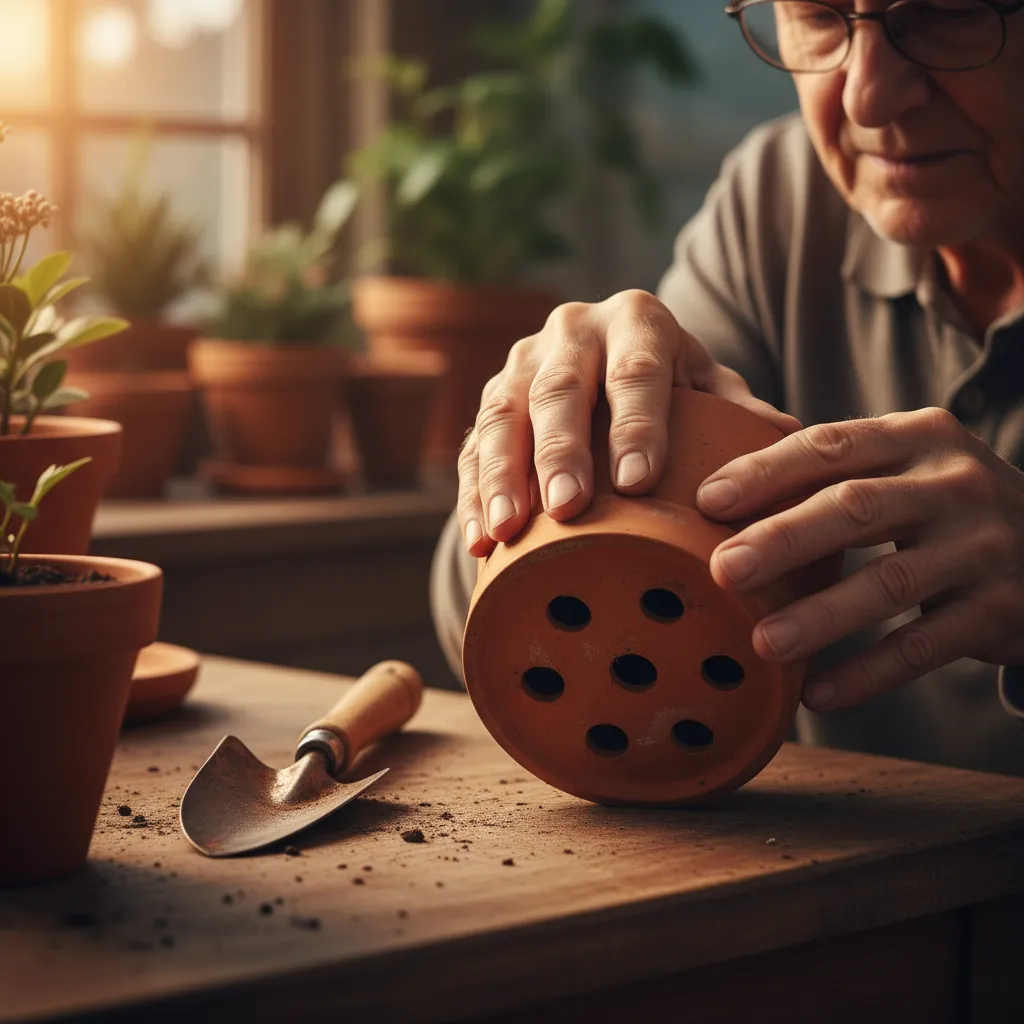
Essential Principles for Bountiful Container Harvests
Achieving a high yield in your container garden goes beyond choosing the right plants. Success hinges on providing optimal growing conditions. Understanding these core principles ensures your `vegetables in pots` receive everything they need to flourish and produce abundantly.
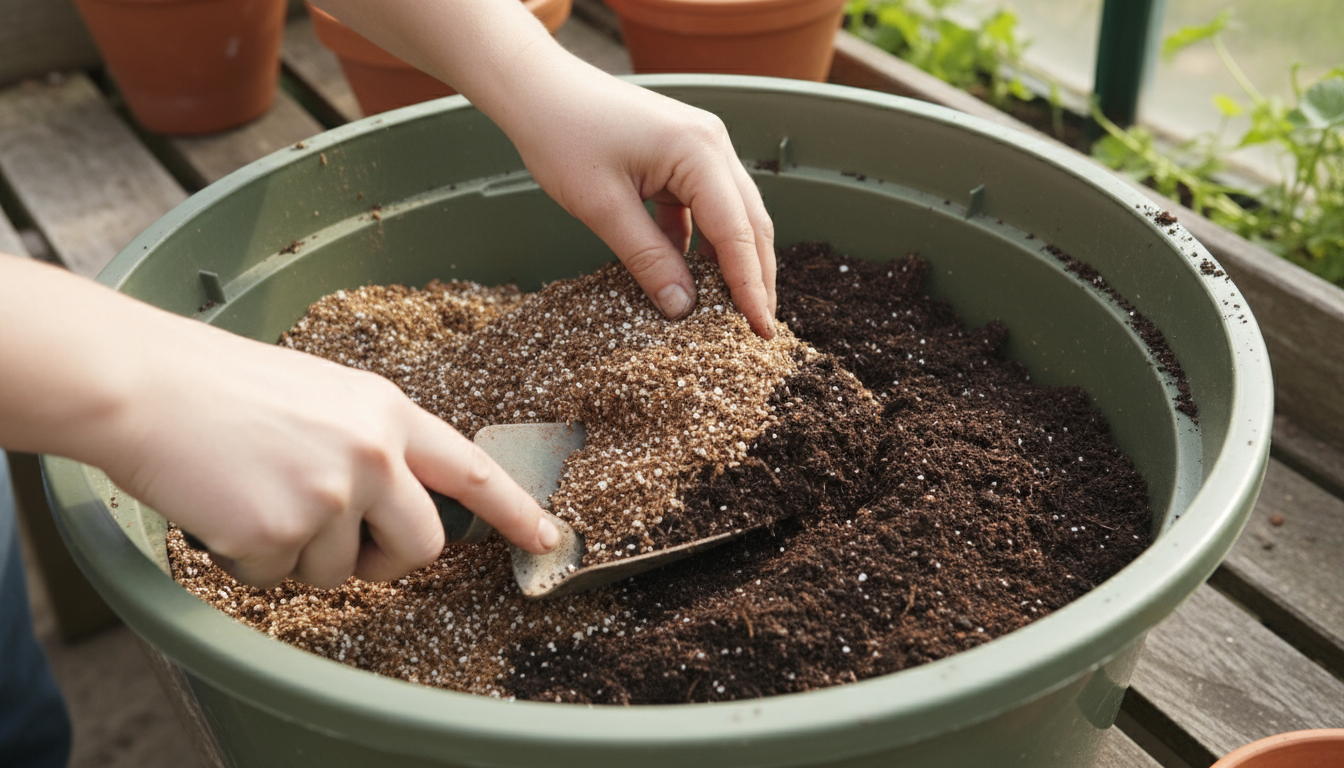
Choosing the Right Containers
The pot itself plays a critical role. Its size, material, and drainage significantly impact plant health and productivity. Smaller pots restrict root growth, which in turn limits plant size and fruit production. Always choose a container that is appropriately sized for the mature plant, erring on the side of larger if unsure.
- Size Matters: A general rule of thumb: larger plants like tomatoes need at least a 5-gallon container (approximately 12-14 inches in diameter and depth), while smaller plants like lettuce can thrive in 6-8 inch pots. Shallow-rooted herbs might do well in 4-6 inch pots. Deeper pots are always better for root vegetables.
- Drainage Holes: This is non-negotiable. Containers must have drainage holes at the bottom to allow excess water to escape. Without proper drainage, roots sit in waterlogged soil, leading to root rot and plant death. If your pot lacks holes, drill them yourself.
- Material: Terracotta pots are attractive but dry out quickly, requiring more frequent watering. Plastic pots retain moisture better but can heat up in direct sun. Fabric grow bags offer excellent aeration and drainage, preventing root circling, and are often a top choice for `container gardening veggies`. Opt for lighter colors in hot climates to prevent roots from overheating.
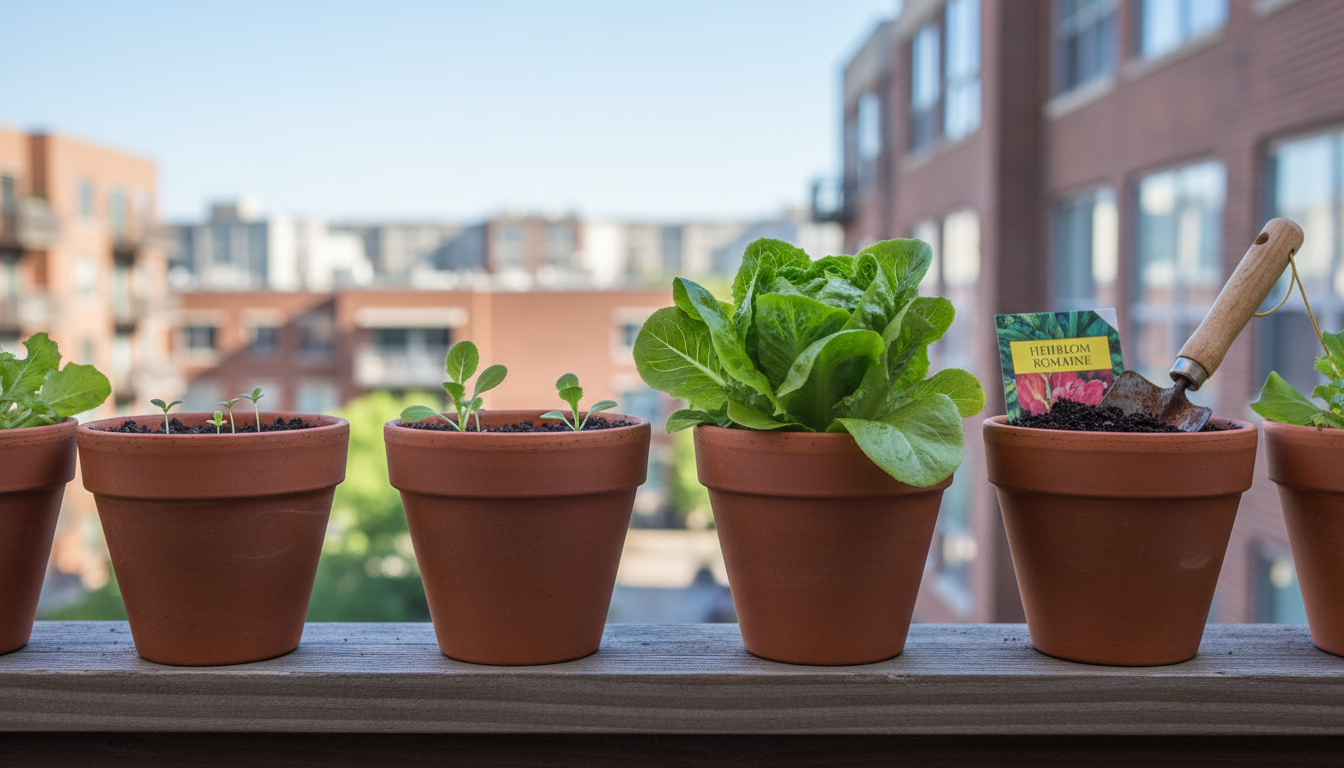
The Foundation: Quality Potting Mix
Unlike garden soil, which can be too heavy and dense for containers, potting mix is specifically formulated to provide the ideal environment for potted plants. It ensures good drainage while retaining essential moisture and nutrients.
- Never Use Garden Soil: Garden soil compacts in pots, suffocating roots and impeding drainage. It also often contains weed seeds, pests, and diseases.
- Look for “Potting Mix” or “Container Mix”: These specialized mixes are lightweight, sterile, and designed for containers. They typically contain peat moss or coir (coconut fiber), perlite or vermiculite, and a starter dose of nutrients.
- Enhance Your Mix: You can amend a basic potting mix with compost (up to 20-30% by volume) to boost fertility and microbial activity, providing a slow-release source of nutrients for your `best crops small garden` will produce.
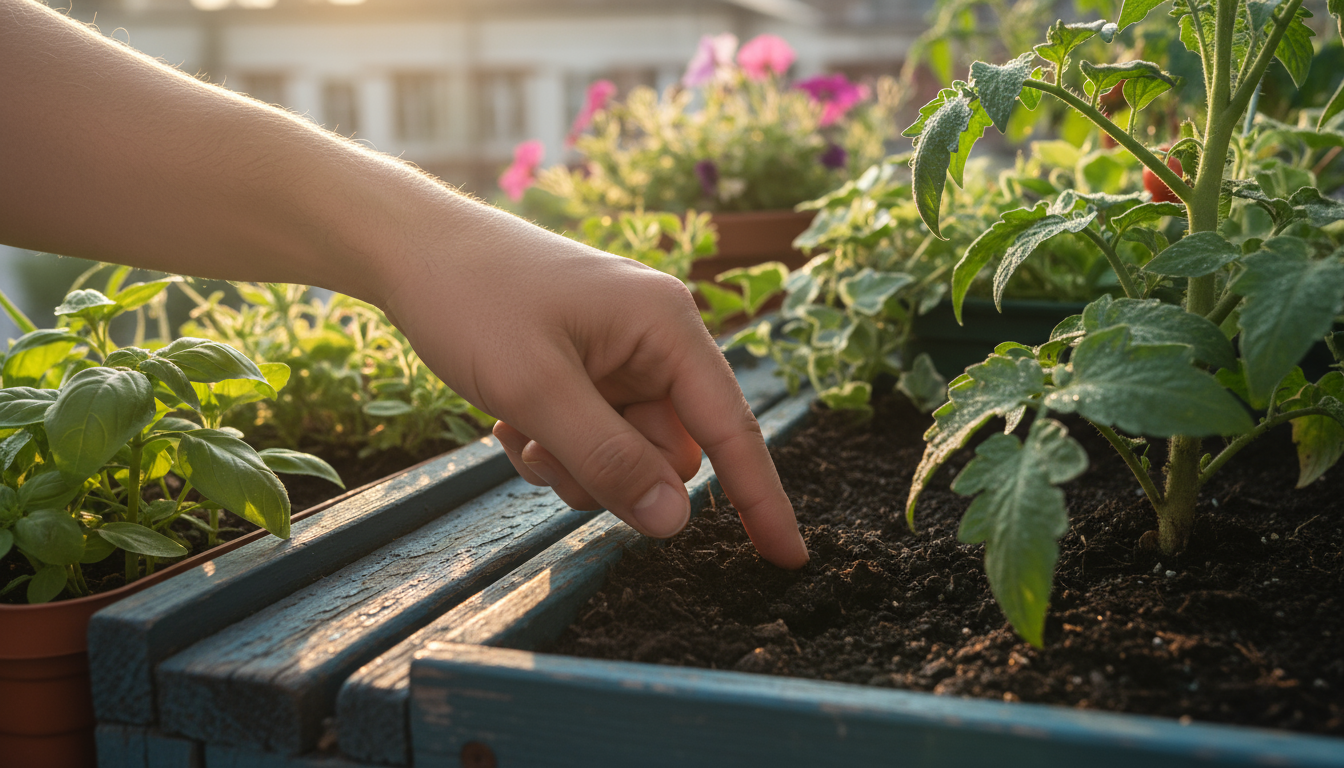
Light: The Energy Source
Most vegetables are sun-lovers, requiring at least 6-8 hours of direct sunlight per day to produce a good yield. Without adequate light, plants become leggy, weak, and produce fewer flowers and fruits.
- Observe Your Space: Track how much direct sun your container gardening area receives throughout the day. South-facing locations generally offer the most sun.
- Rotate and Move: If light is limited, rotate your pots every few days or move them to follow the sun. This is a key advantage of `vegetables in pots`.
- Consider Shady Crops: If your space truly gets less than 6 hours of sun, focus on leafy greens like lettuce, spinach, and Swiss chard, which can tolerate partial shade.
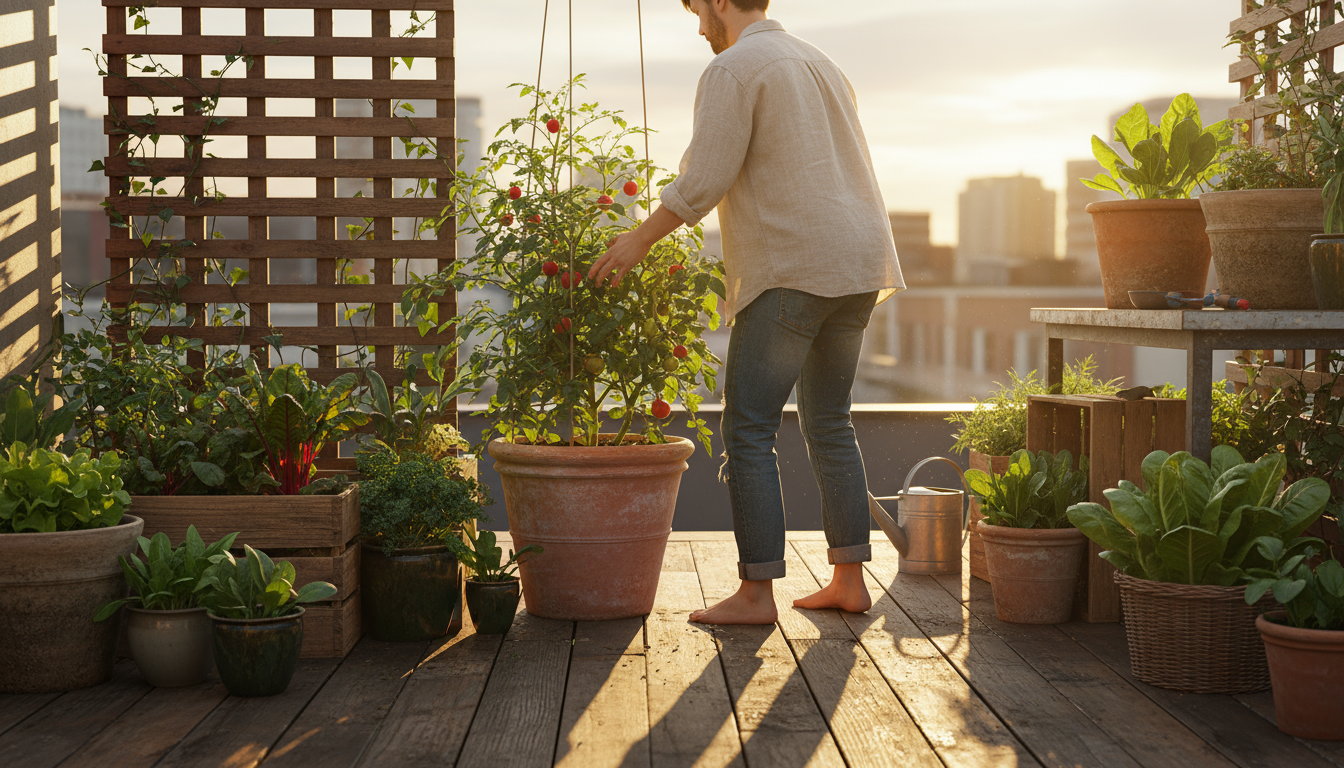
Watering Wisdom
Consistent and appropriate watering is crucial. Container plants dry out much faster than in-ground plants due to increased air circulation around the pot and faster evaporation. Irregular watering causes stress, leading to stunted growth, blossom drop, and reduced yields.
- Feel the Soil: The best way to determine if your plants need water is to stick your finger about an inch or two into the potting mix. If it feels dry, it’s time to water.
- Water Thoroughly: Water until it drains from the bottom of the pot. This ensures the entire root ball is moistened. Avoid frequent, shallow watering, which encourages shallow root systems.
- Timing is Key: Water in the morning or early evening to minimize evaporation and allow foliage to dry before nightfall, reducing disease risk.
- Adjust for Weather: Hot, windy weather or fast-growing plants demand more water. Smaller pots dry out quicker.
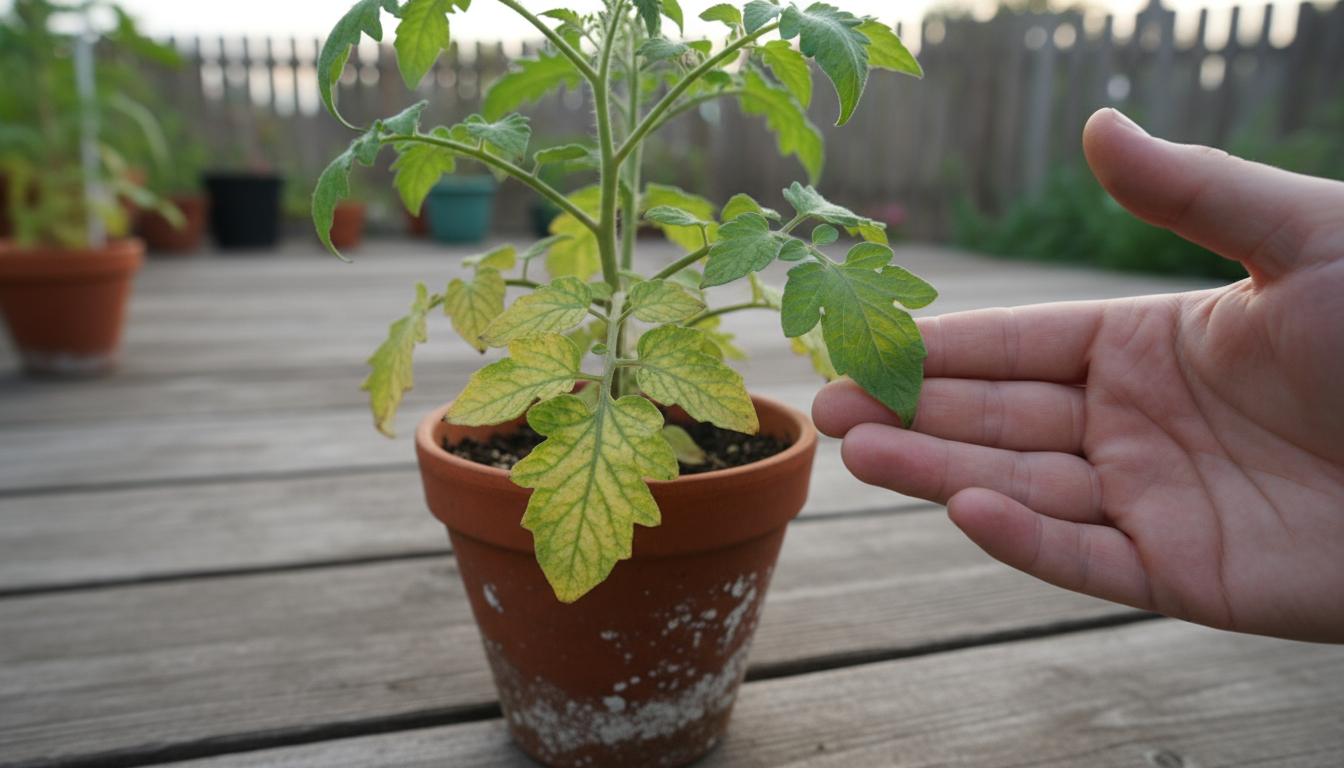
Nutrient Management: Feeding Your Plants
Potting mix provides some initial nutrients, but container plants quickly deplete them, especially high-yielding varieties. Regular feeding is essential for sustained growth and production.
- Start with Compost: As mentioned, mixing compost into your potting mix provides a gentle, slow-release nutrient source.
- Liquid Fertilizers: For a quick boost, use a balanced liquid fertilizer (like a 5-1-1 or 2-4-2 N-P-K ratio) every 2-4 weeks, following product instructions. You can also opt for organic options like fish emulsion or diluted compost tea.
- Slow-Release Granules: Incorporate slow-release granular fertilizers into the potting mix at the beginning of the season for continuous feeding.
- Observe Your Plants: Yellowing leaves, stunted growth, or poor flowering can indicate a nutrient deficiency. Adjust your feeding regimen accordingly.

The Best Vegetables to Grow in Pots: Our Top Yield Rankings
When selecting `container gardening veggies`, yield is a primary concern for small spaces. You want plants that produce generously over an extended period. Our ranking below highlights vegetables known for their productivity and suitability for pots, helping you choose the `best crops small garden` can produce. We consider not just the total quantity but also the ease of harvest and continuous production potential.
| Rank | Vegetable | Yield Potential (per plant) | Ideal Pot Size (Diameter/Depth) | Notes on Yield & Care |
|---|---|---|---|---|
| 1 | Bush Beans | Very High. Multiple harvests over 2-3 months. | 10-12 inches / 8-10 inches (at least 3 gallons), for 3-5 plants. | Bush varieties do not need trellising. They produce abundant, continuous harvests if picked regularly. Compact and productive. |
| 2 | Cherry Tomatoes | High. Numerous small fruits over many weeks. | 14-18 inches / 12-16 inches (at least 5 gallons). | Determinate or “dwarf” varieties are best for pots. Require staking or a cage. Daily harvests are common once production starts. |
| 3 | Radishes | High (quick yield). Many per plant grouping. | 6-8 inches / 6-8 inches (can grow many in one pot). | Extremely fast-growing, ready in 3-4 weeks. Ideal for succession planting for continuous harvests. |
| 4 | Leafy Greens (Lettuce, Spinach, Arugula, Swiss Chard) | High. Continuous “cut-and-come-again” harvests. | 6-10 inches / 6-10 inches (can grow multiple plants). | Harvest outer leaves to encourage new growth. Provide partial shade in hot weather to prevent bolting (going to seed). |
| 5 | Zucchini / Bush Summer Squash | High. 1-2 fruits per plant per week when productive. | 18-24 inches / 16-18 inches (at least 10 gallons). | Choose “bush” or “dwarf” varieties specifically bred for containers. Needs substantial watering and fertilizing. Extremely productive. |
| 6 | Peppers (Bell & Hot) | Medium-High. Several fruits over 2-3 months. | 12-14 inches / 10-12 inches (at least 3 gallons). | Productivity increases with consistent warmth and sunlight. Support taller plants with stakes. |
| 7 | Cucumbers (Bush Varieties) | Medium-High. Multiple fruits per plant over weeks. | 14-16 inches / 12-14 inches (at least 5 gallons). | Select “bush” or “patio” varieties. A small trellis or cage is beneficial even for bush types to save space and keep fruit clean. |
| 8 | Herbs (Basil, Mint, Cilantro, Parsley) | Very High (leaves). Continuous harvest for seasoning. | 6-10 inches / 6-10 inches (can grow multiple per pot). | Pinch back regularly to encourage bushier growth and prevent flowering. Excellent for daily use. |
| 9 | Strawberries (Everbearing) | Medium-High. Fruits intermittently through the season. | 8-10 inches / 6-8 inches (for 1-2 plants). | Great for hanging baskets or strawberry pots. Everbearing varieties offer smaller but more consistent harvests. |
| 10 | Carrots (Short & Round Varieties) | Medium. Good yield per pot. | 8-12 inches / 10-12 inches (wider is better for more plants). | Choose “Chantenay”, “Danvers Half Long”, or “Paris Market” types. Ensure loose, stone-free potting mix. Thin seedlings for best root development. |

Deep Dive: Cultivating Your High-Yield Picks
To truly maximize your harvest from `vegetables in pots`, understanding the specific needs of your chosen plants is key. Here, we offer detailed cultivation advice for some of our top-ranked, high-yielding `container gardening veggies`.
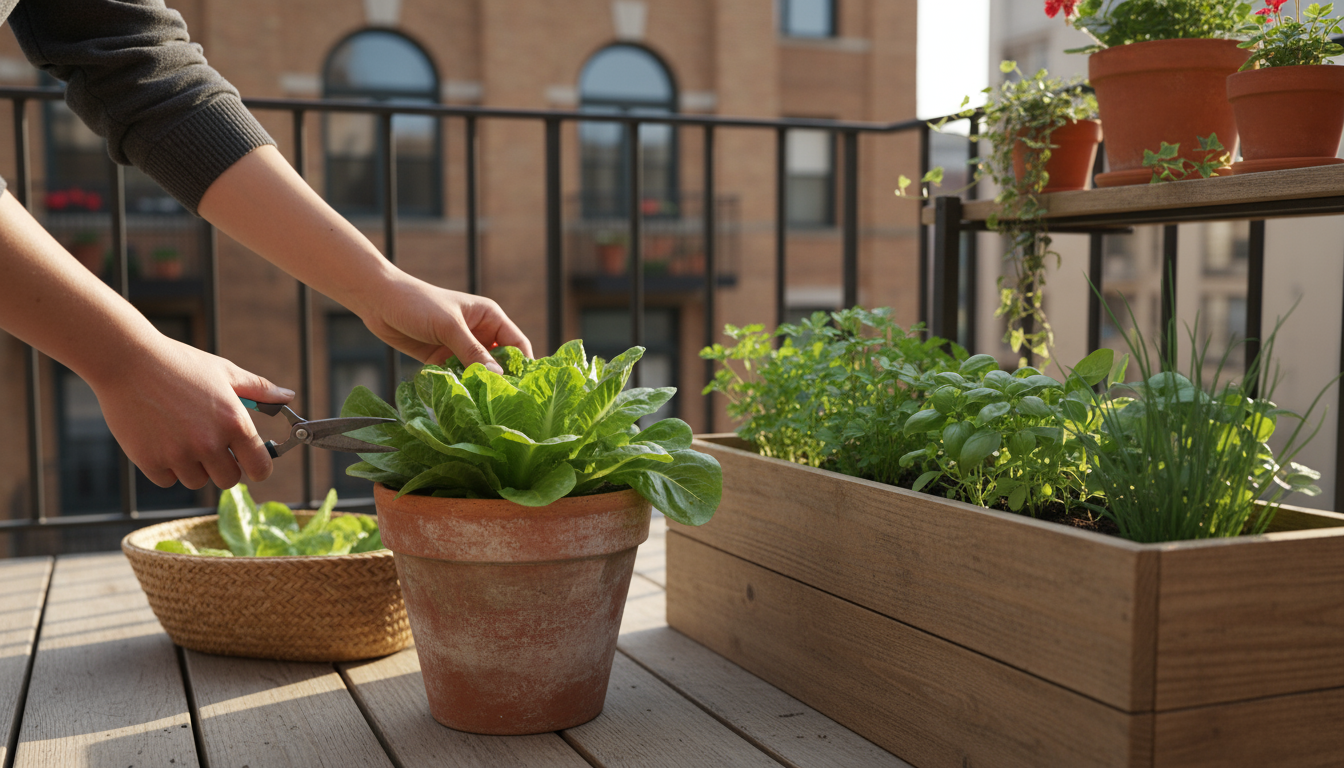
Bush Beans: The Prolific Pod Producers
Bush beans are a dream for small-space gardeners due to their compact size and exceptional productivity. They produce an abundance of pods over a concentrated period, followed by subsequent flushes if you keep picking.
- Variety Selection: Look for classic bush snap beans like ‘Contender’, ‘Provider’, or ‘Blue Lake Bush’.
- Planting: Sow seeds directly into your chosen container, about 1 inch deep and 3-4 inches apart. A 10-12 inch pot can comfortably hold 3-5 plants. Ensure warm soil temperatures (above 60°F or 15°C) for germination.
- Sunlight: Provide at least 6-8 hours of direct sun daily.
- Watering: Keep the soil consistently moist, especially during flowering and pod development. Inconsistent watering can lead to reduced yield and tough pods.
- Fertilizing: Beans are nitrogen fixers, meaning they can draw nitrogen from the air. Avoid high-nitrogen fertilizers which encourage leafy growth at the expense of pods. A balanced fertilizer applied once or twice during the growing season is usually sufficient, or simply amend your potting mix with compost.
- Harvesting: Begin harvesting when pods are young and tender, usually 50-60 days after planting. Pick every 2-3 days to encourage continuous production. The more you pick, the more they produce.
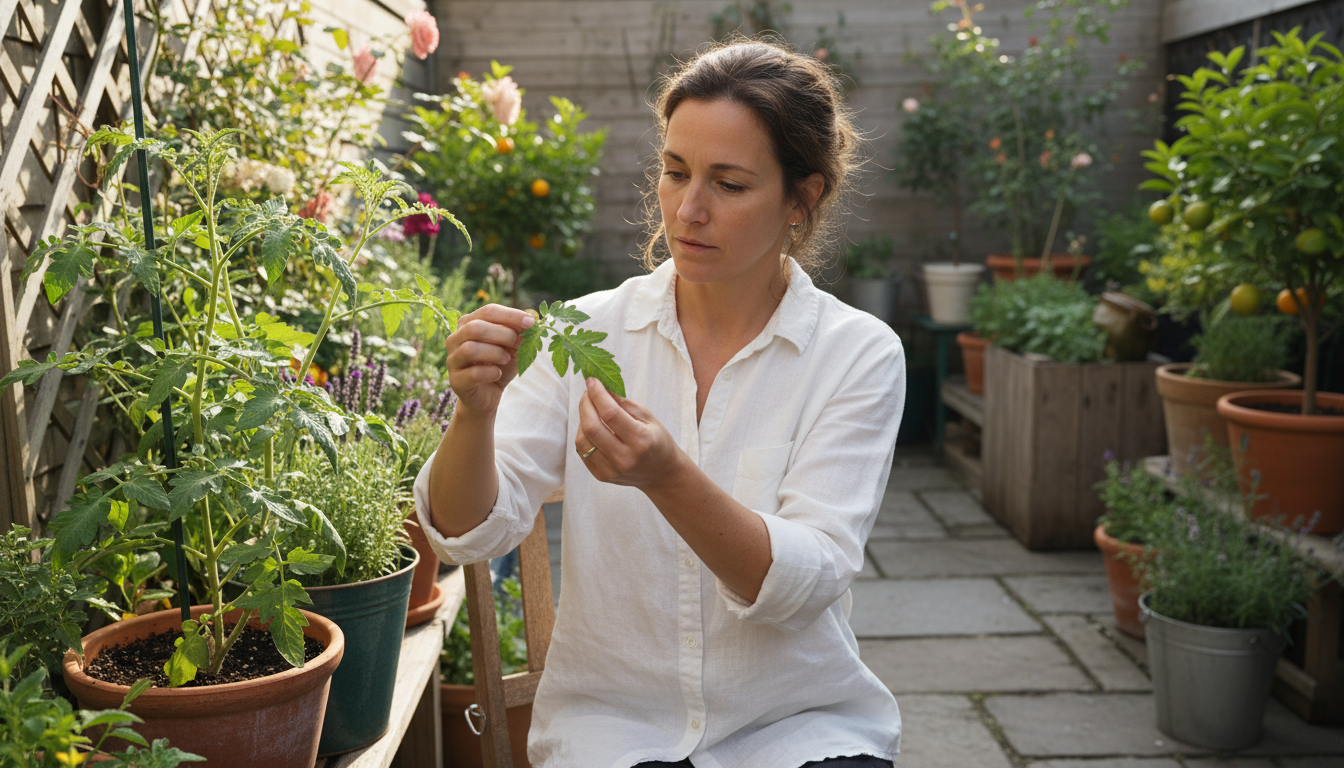
Cherry Tomatoes: Sweet Success in Small Spaces
Cherry tomatoes are incredibly rewarding in containers, often out-yielding their larger counterparts in sheer numbers. Their small size makes them perfect for snacking and salads.
- Variety Selection: Choose determinate (bush) varieties or compact indeterminate types like ‘Tiny Tim’, ‘Patio Princess’, ‘Sweet Million’, or ‘Sungold’.
- Planting: Start with healthy seedlings. Bury them deeply, up to the first set of true leaves, to encourage a strong root system. One plant per 5-gallon (or larger) pot.
- Sunlight: Tomatoes demand full sun, at least 8 hours a day, for optimal fruit production.
- Watering: Consistent watering is critical. Fluctuations lead to blossom end rot (a dark, sunken spot on the bottom of the fruit) and cracked fruit. Keep the soil evenly moist, never soggy or bone dry.
- Fertilizing: Tomatoes are heavy feeders. Use a balanced fertilizer initially, then switch to a “bloom” or “tomato” specific fertilizer (higher in phosphorus and potassium) once flowers appear, every 2-3 weeks.
- Support: Even bush varieties benefit from a sturdy stake or small tomato cage to support the fruit-laden branches and prevent breakage.
- Harvesting: Pick fruits when they are fully colored and firm. Continue harvesting throughout the summer and into fall until frost.
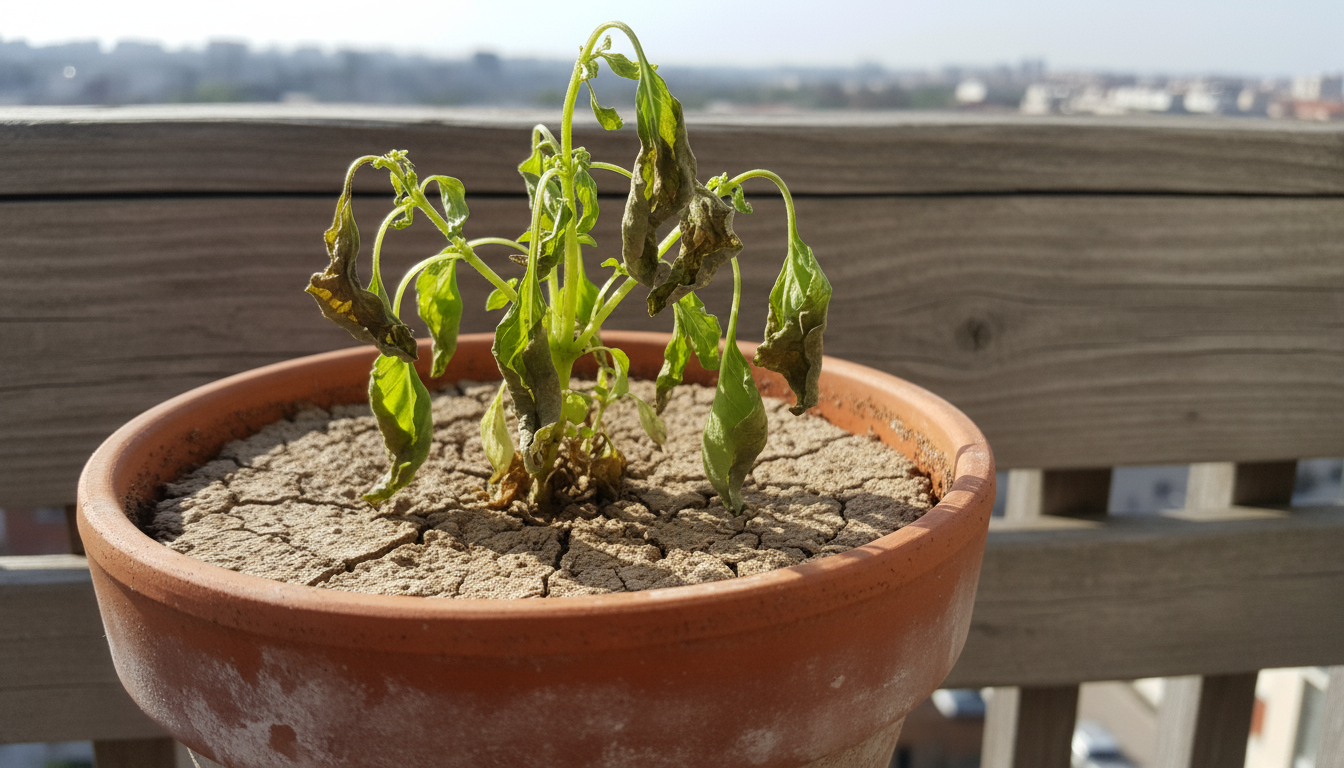
Leafy Greens: The Cut-and-Come-Again Champions
Lettuce, spinach, arugula, and Swiss chard are some of the easiest and most productive `best crops small garden` can produce. Their “cut-and-come-again” nature means you get multiple harvests from a single planting.
- Variety Selection: Look for loose-leaf lettuce varieties (‘Black Seed Simpson’, ‘Salad Bowl’), ‘Tyee’ spinach, ‘Bright Lights’ Swiss chard, or any fast-growing arugula.
- Planting: Direct sow seeds thinly and cover lightly with potting mix. Or, plant seedlings a few inches apart. You can sow a new batch every 2-3 weeks for continuous supply (succession planting).
- Sunlight: 4-6 hours of direct sun is sufficient. In hot climates, partial shade in the afternoon prevents bolting.
- Watering: Keep the soil consistently moist. Leafy greens need ample water for tender, crisp leaves.
- Fertilizing: A balanced liquid fertilizer every 2-3 weeks, or compost tea, supports lush growth.
- Harvesting: Harvest outer leaves as needed, allowing the inner leaves to continue growing. For spinach and arugula, you can also harvest the entire plant once mature. Swiss chard stems can be harvested individually.
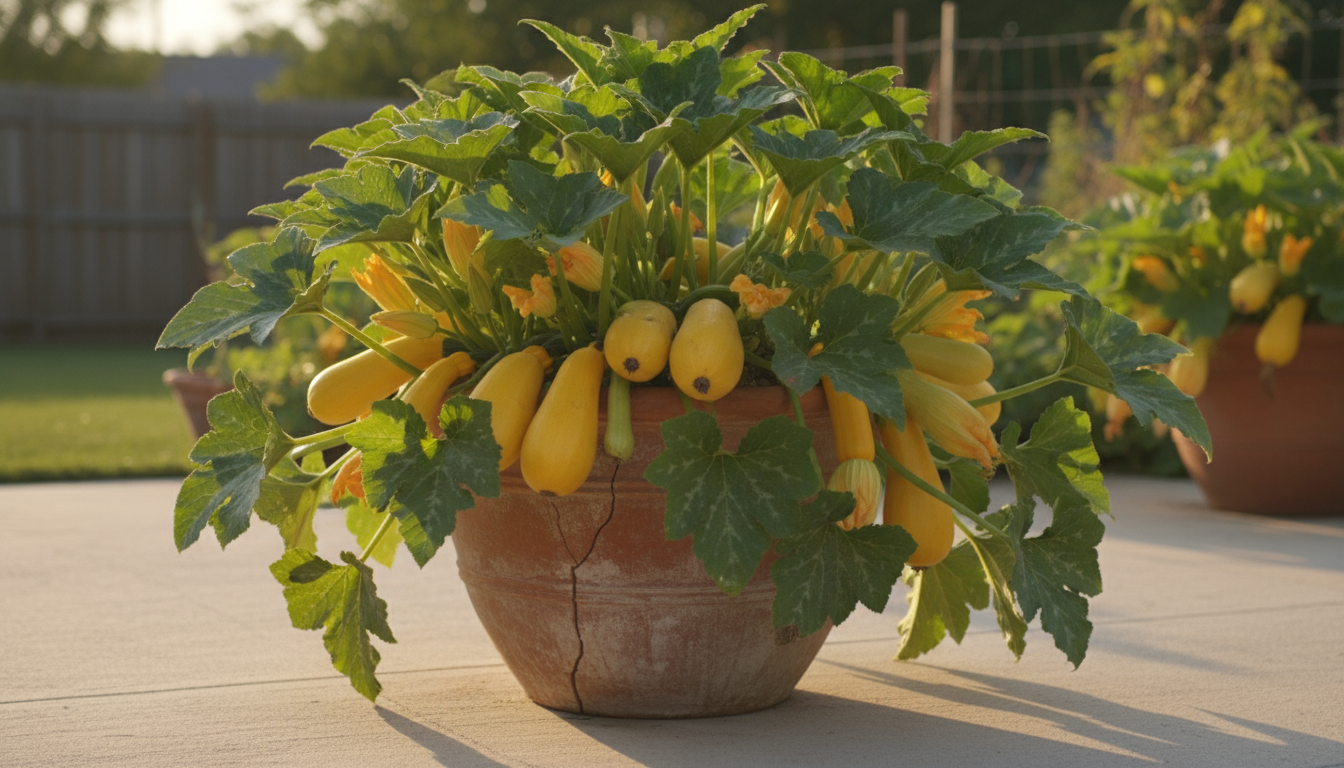
Zucchini / Bush Summer Squash: Surprisingly Productive in Pots
While often associated with sprawling garden beds, bush varieties of zucchini and summer squash are surprisingly productive in large containers. They are known for their rapid growth and continuous fruit set.
- Variety Selection: Absolutely choose bush or patio varieties like ‘Bush Zucchini’, ‘Eight Ball’, or ‘Patio Star’. Standard varieties become far too large.
- Planting: Plant one healthy seedling per very large pot (at least 10-gallon, ideally 15-gallon or larger).
- Sunlight: Full sun is essential, at least 8 hours daily.
- Watering: Squash are thirsty plants, especially when fruiting. Water deeply and consistently, potentially twice a day in hot, sunny weather. Inconsistent watering leads to small or malformed fruits.
- Fertilizing: These are heavy feeders. Begin with a balanced fertilizer, then switch to a high-potassium fertilizer (like a “bloom” formula) once flowering starts, applying every 1-2 weeks.
- Pollination: Squash plants produce both male and female flowers. Ensure you have bees or other pollinators visiting your garden. If not, you may need to hand-pollinate by transferring pollen from male flowers to female flowers with a small brush.
- Harvesting: Harvest zucchini when they are young and tender (6-8 inches long) for the best flavor and to encourage more fruit production. Letting them grow too large diminishes quality and signals the plant to slow down.
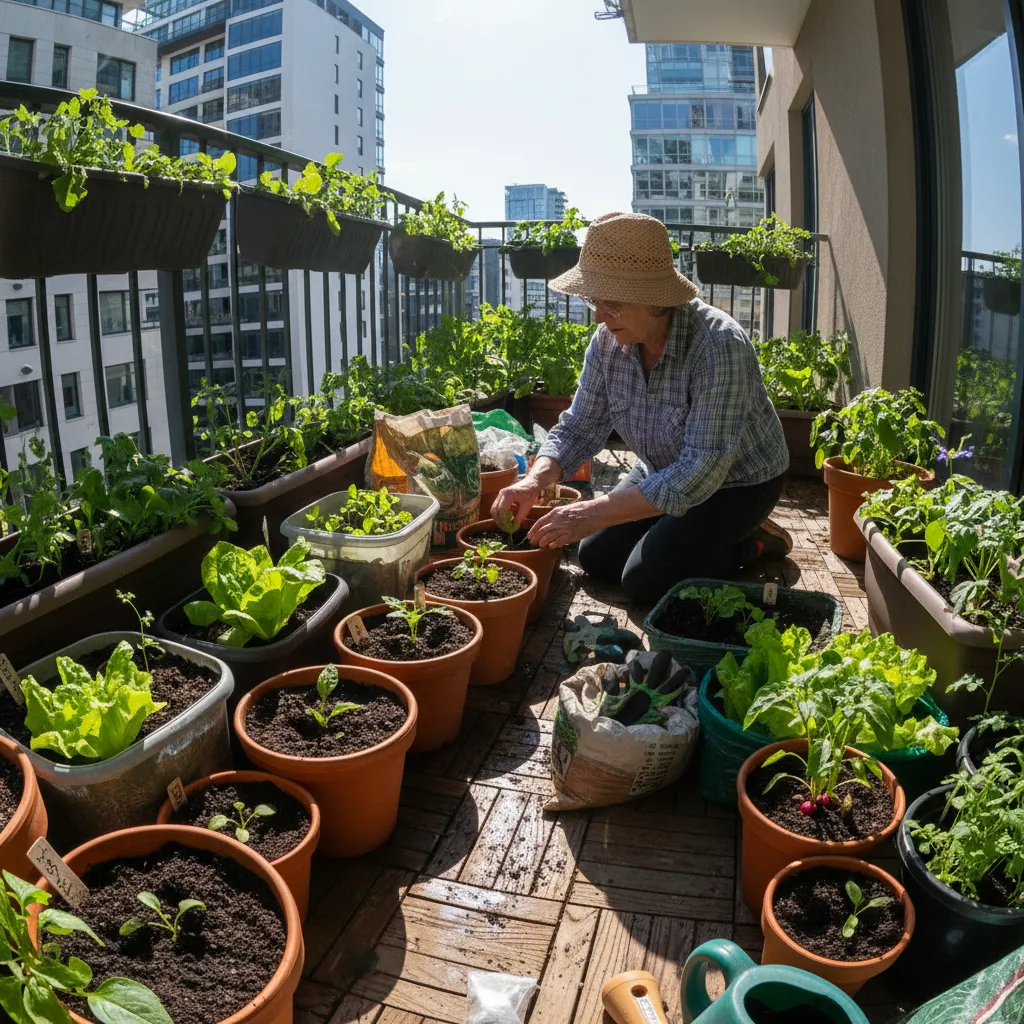
Optimizing Your Pot Garden: Tips for Continuous Production
A truly productive container garden delivers fresh produce not just in a single burst, but continuously throughout the growing season. Implementing smart strategies ensures a steady supply of `container gardening veggies` for your kitchen.
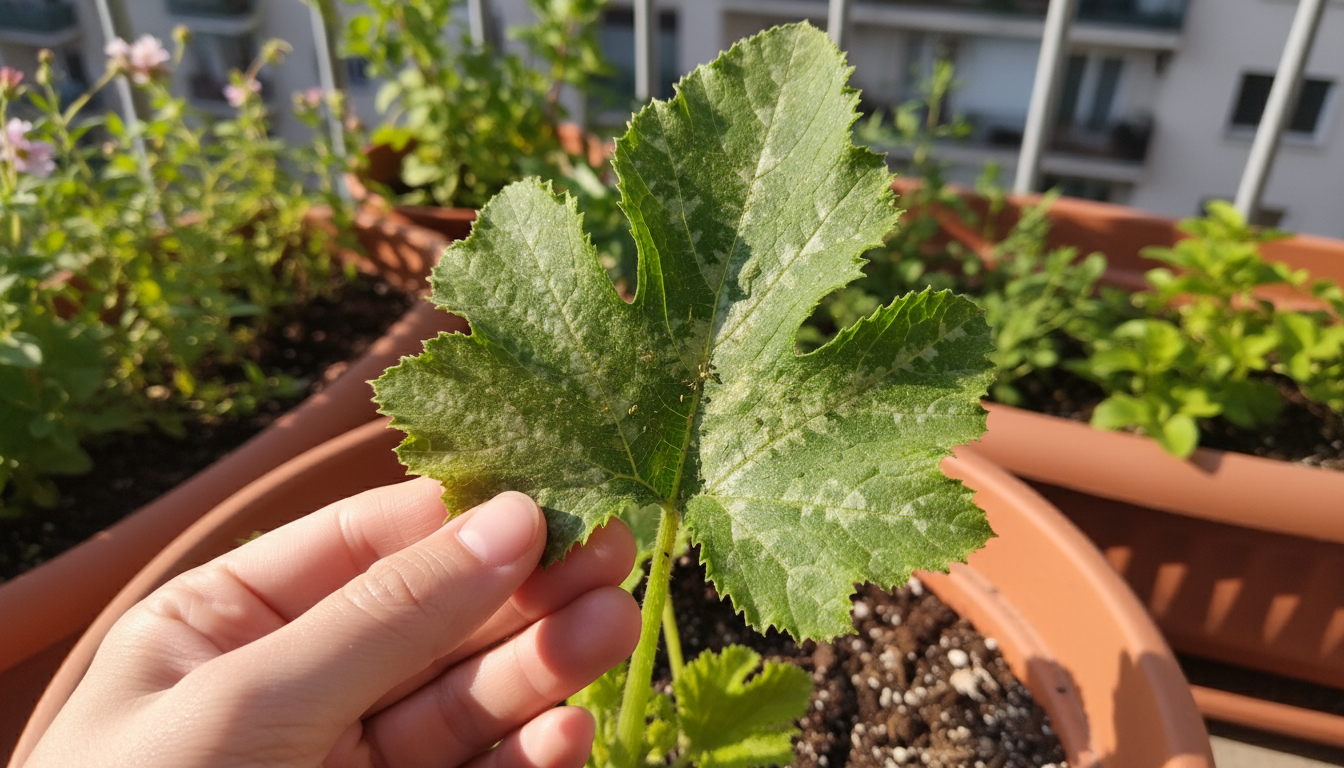
Succession Planting: The Secret to Endless Harvests
Succession planting involves making small, staggered plantings every few weeks, rather than planting everything at once. This prevents an overwhelming glut of produce followed by nothing. It is particularly effective for fast-growing `vegetables in pots`.
- How it Works: For crops like lettuce, spinach, radishes, bush beans, or cilantro, plant a small batch of seeds today, then plant another small batch in 2-3 weeks, and so on. As one planting finishes producing, the next one is ready to harvest.
- Identify Fast Crops: Radishes (3-4 weeks), lettuce (4-6 weeks), spinach (6-8 weeks), and bush beans (8-9 weeks) are excellent candidates.
- Rotate Crops: When one crop finishes, refresh the potting mix with some compost and plant something different. This helps manage nutrient depletion and potential pest build-up.
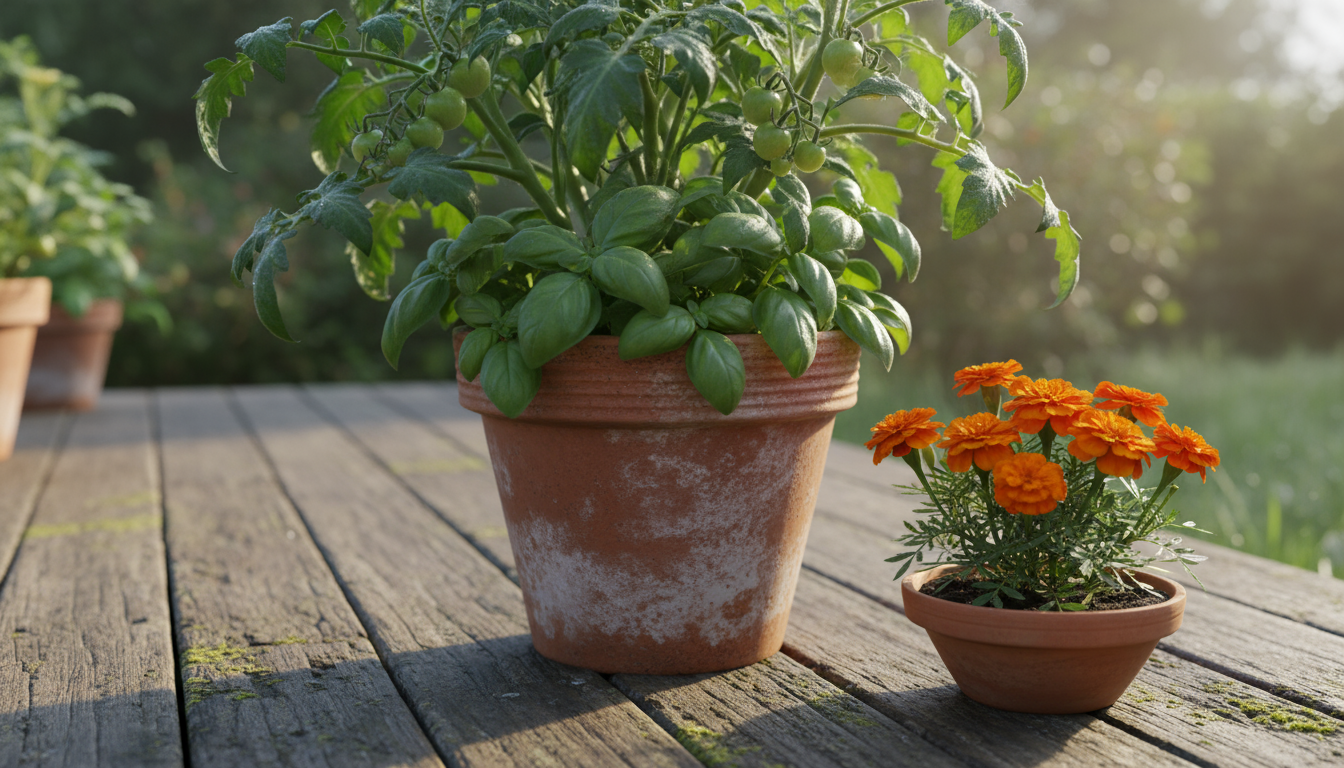
Companion Planting for Healthier Pots
Companion planting involves growing specific plants together that benefit each other. This can deter pests, attract beneficial insects, improve soil health, or even enhance flavor. While space is limited in containers, you can still strategically pair plants.
- Basil with Tomatoes: Many gardeners believe basil improves tomato flavor and deters tomato hornworms and flies. Plant a basil plant in the same large pot as your tomato, or in an adjacent container.
- Marigolds (French) Anywhere: Marigolds are known to repel nematodes (microscopic worms that attack roots) and other pests. Tuck a marigold plant into any large pot or place them strategically around your container garden.
- Nasturtiums as Sacrificial Plants: Aphids often prefer nasturtiums. Plant them near susceptible crops; aphids may congregate on the nasturtiums, leaving your other `best crops small garden` intact.
- Herbs and Leafy Greens: Many herbs can be interplanted with leafy greens. For example, plant cilantro or parsley among your lettuce to maximize space.
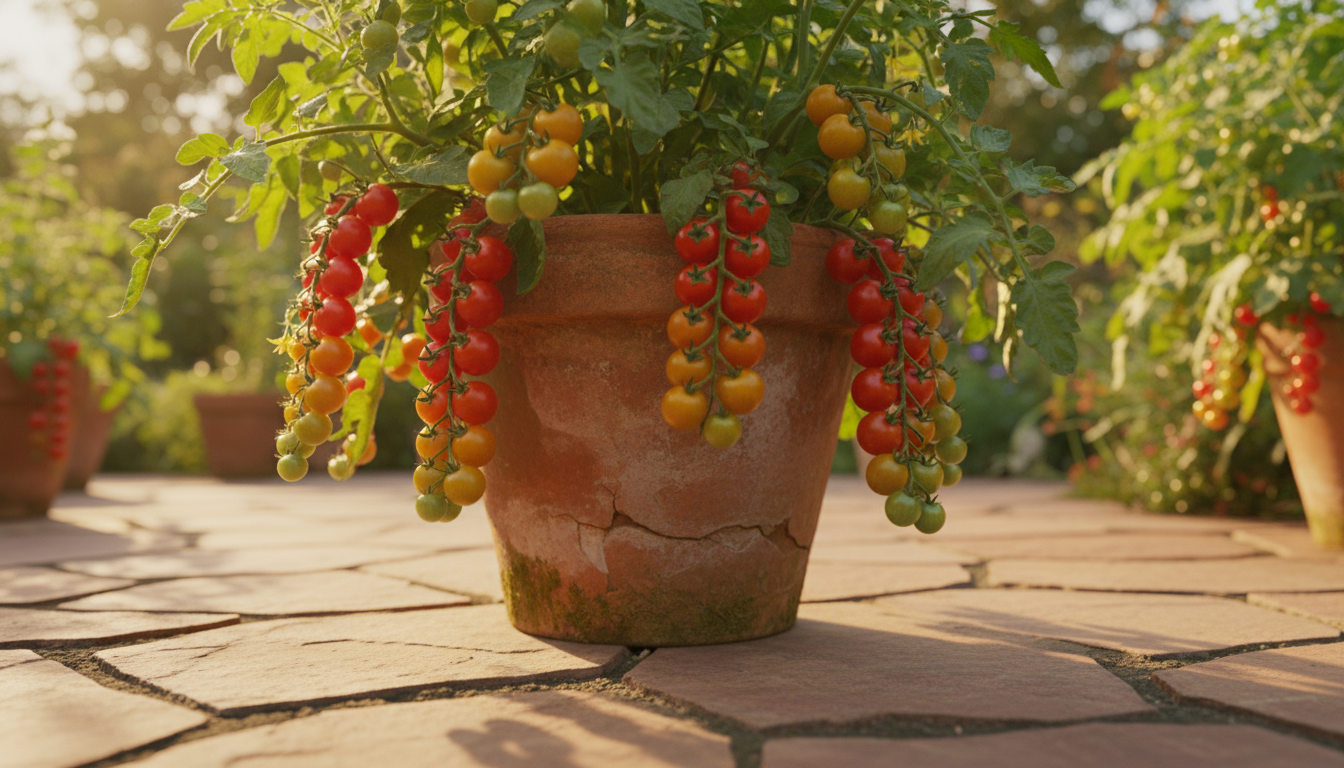
Vertical Gardening and Trellising
When you garden in a small space, thinking vertically multiplies your growing area. Many `vegetables in pots` can be trained to grow upwards.
- Peas and Pole Beans: While bush beans were ranked high for yield and ease, pole beans and peas can offer even higher yields over a longer season if you provide a trellis or support. A simple tepee of bamboo stakes or a small mesh trellis works well in a pot.
- Vining Cucumbers: Even “bush” cucumbers benefit from a small trellis to keep fruit off the ground, prevent rot, and save space.
- Dwarf Vining Tomatoes: Some compact indeterminate cherry tomatoes can be trained up a stake or small cage, allowing for more air circulation and easier harvesting.
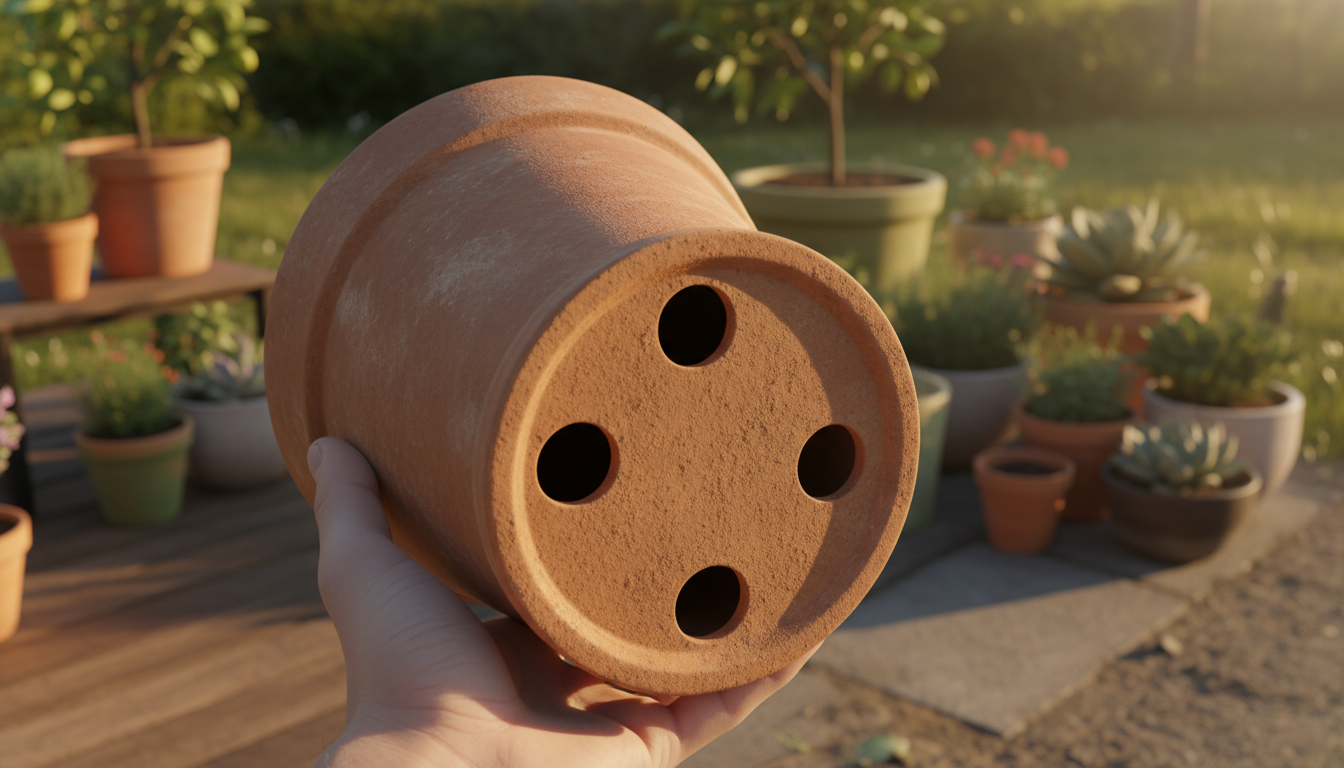
Integrated Pest Management (IPM) for Containers
Pests can quickly decimate a container garden. Regular monitoring and proactive measures are your best defense.
- Daily Inspection: Make it a habit to check your plants daily for any signs of pests (tiny bugs, sticky residue, chewed leaves) or disease. Early detection makes control much easier.
- Hand Picking: For larger pests like tomato hornworms or slugs, hand-picking them off your plants is often the most effective method.
- Strong Water Spray: A strong jet of water can dislodge aphids and spider mites. Repeat every few days until the infestation is gone.
- Insecticidal Soap: For persistent infestations of soft-bodied insects (aphids, whiteflies, spider mites), an organic insecticidal soap is a safe and effective option. Ensure you spray the undersides of leaves where pests often hide.
- Beneficial Insects: Encourage beneficial insects (ladybugs, lacewings) by planting small flowering herbs like dill, cilantro (allowed to flower), or sweet alyssum nearby.
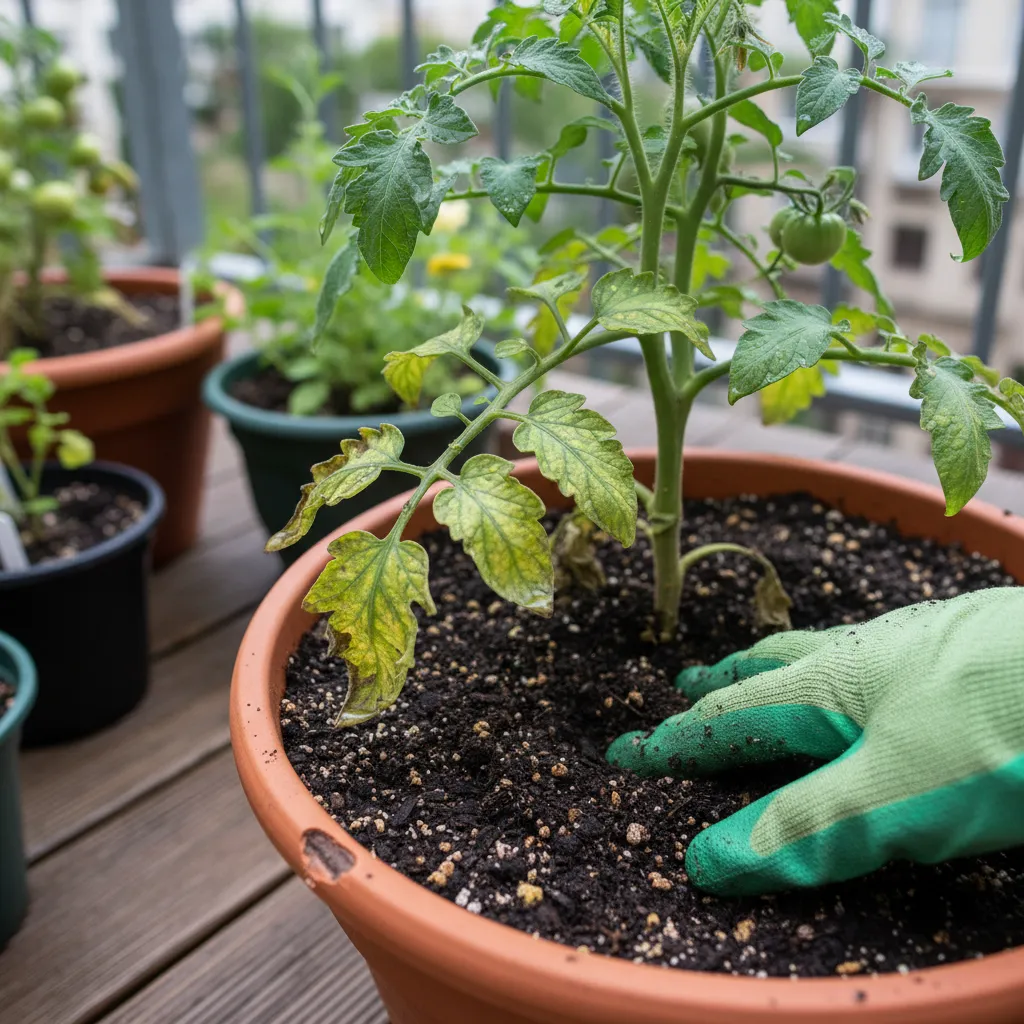
Troubleshooting Common Container Gardening Issues
Even with the best intentions, you might encounter challenges when growing `vegetables in pots`. Identifying and addressing these issues promptly ensures your `container gardening veggies` remain healthy and productive.
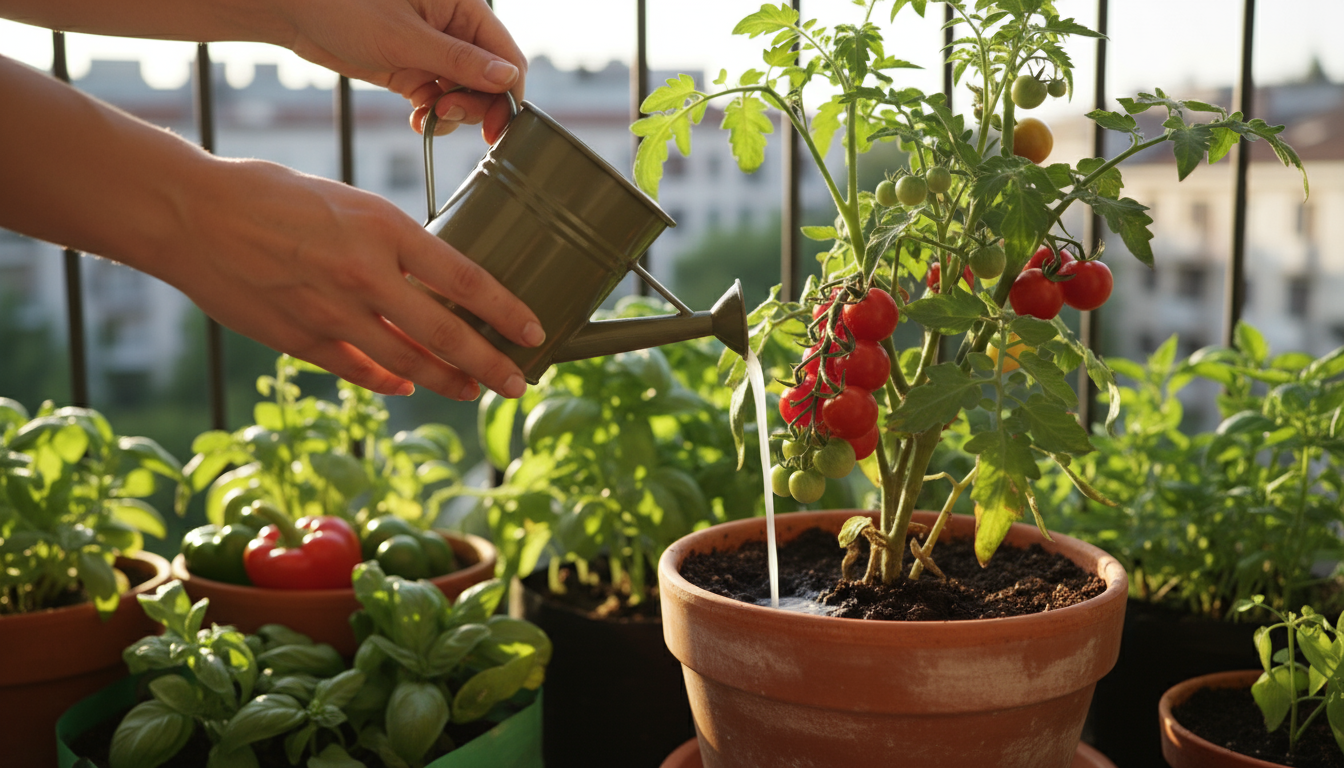
Yellowing Leaves
Yellow leaves are a common symptom with several potential causes:
- Nutrient Deficiency:
- Symptom: Older leaves turning yellow, especially between the veins.
- Solution: Your plants likely need more nitrogen. Apply a balanced liquid fertilizer or incorporate compost into the top layer of your potting mix. For consistent feeding, consider using slow-release granules at planting.
- Overwatering:
- Symptom: Leaves yellowing and possibly drooping, soft stems, foul smell from soil.
- Solution: Ensure your pot has adequate drainage holes. Allow the top inch or two of soil to dry out before watering again. Reduce watering frequency. If root rot is severe, repotting into fresh, drier potting mix may be necessary.
- Underwatering:
- Symptom: Leaves yellowing and crispy, wilting, soil pulling away from pot edges.
- Solution: Water thoroughly until water drains from the bottom. Establish a more consistent watering schedule, checking soil moisture daily in hot weather. Mulching the top of the pot helps retain moisture.
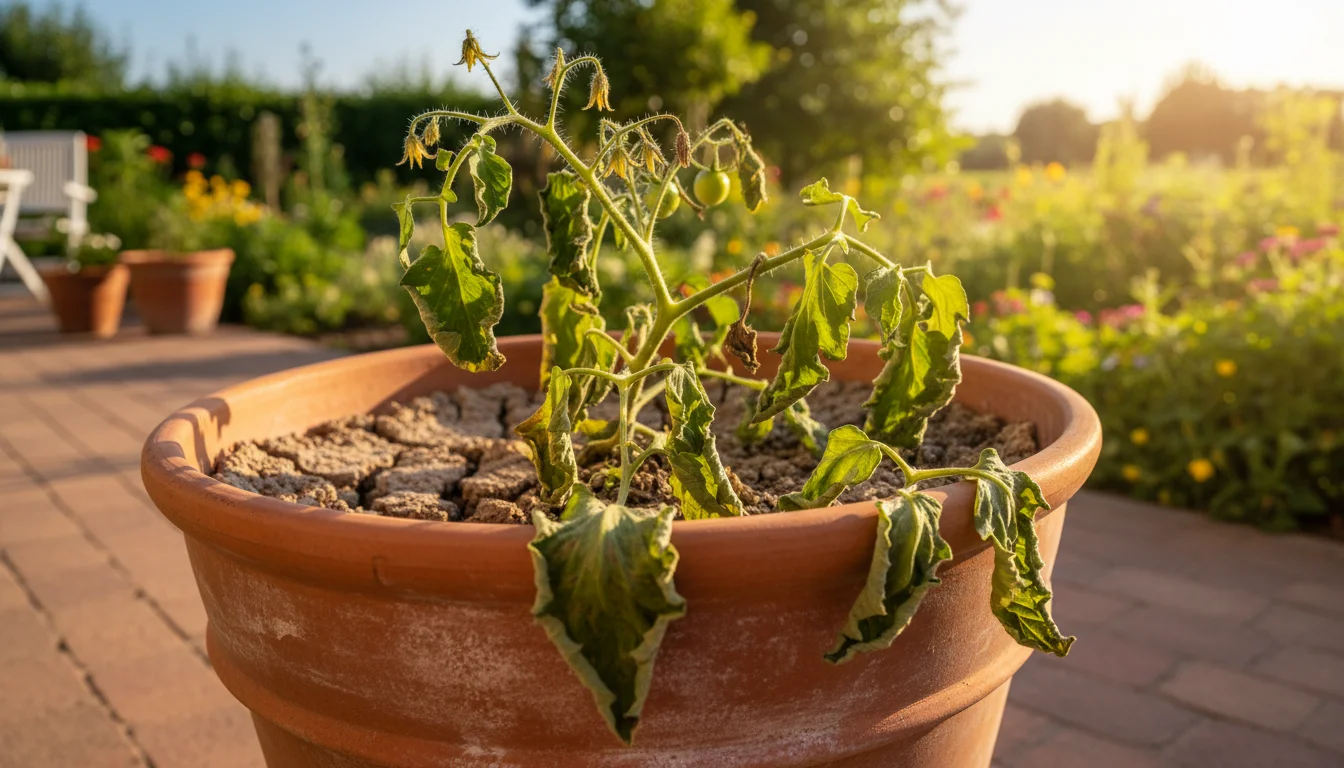
Wilting Plants
Wilting means your plant is struggling to get enough water to its leaves. This can be caused by both too much and too little water, or extreme heat.
- Underwatering:
- Symptom: Plant looks droopy, leaves may feel dry and crisp. Occurs when soil is dry to the touch.
- Solution: Water immediately and thoroughly. For severely dry pots, soak the entire pot in a basin of water for 30 minutes to rehydrate the soil.
- Overwatering (Root Rot):
- Symptom: Plant looks droopy even when the soil is wet, leaves may also be yellow. Roots are rotting and cannot absorb water.
- Solution: Assess drainage. Reduce watering. If severe, carefully lift the plant, trim off any mushy, brown roots, and repot into fresh, well-draining potting mix.
- Heat Stress:
- Symptom: Leaves droop during the hottest part of the day, but perk up in the evening.
- Solution: This is often a natural defense mechanism. Ensure plants are well-watered in the morning. If possible, move pots to a location that receives afternoon shade on extremely hot days.
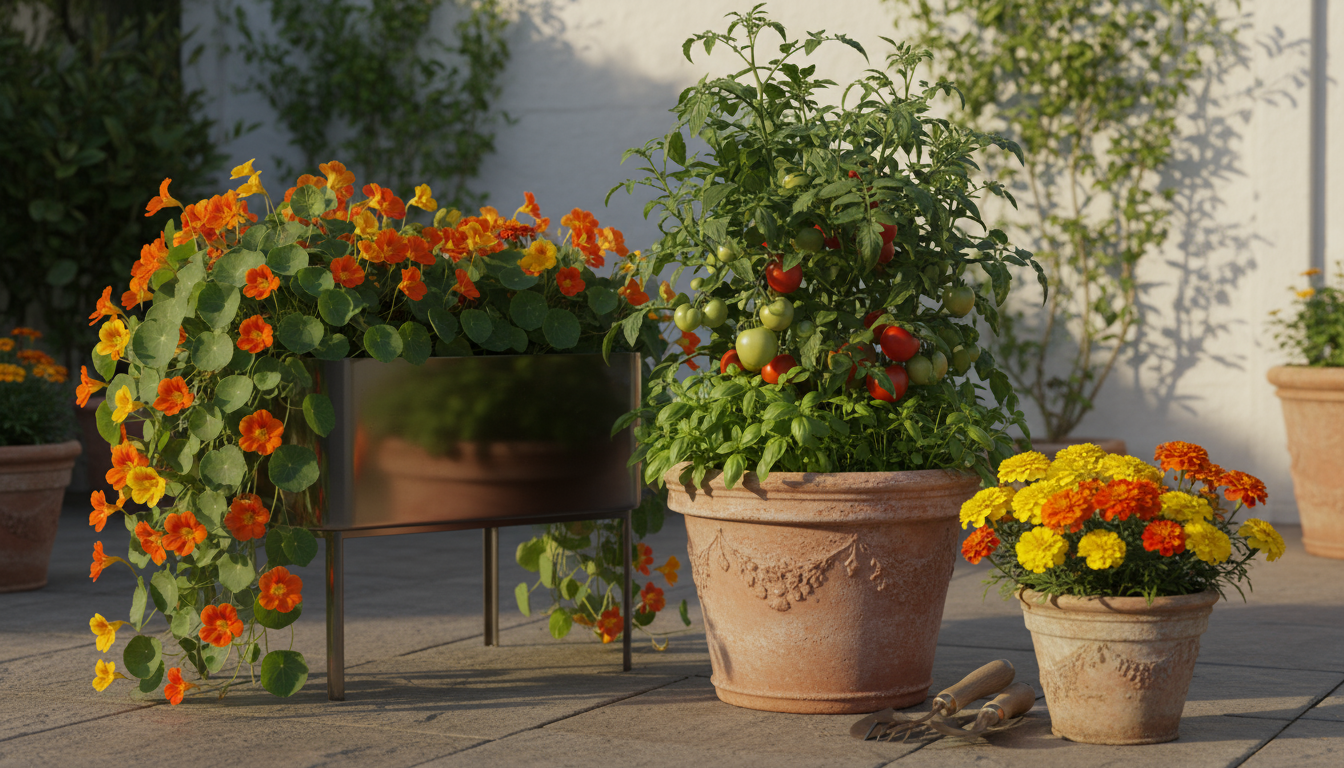
Blossom Drop / No Fruit Set
Flowers form, but then fall off without producing fruit, especially common in tomatoes, peppers, and squash.
- Extreme Temperatures:
- Symptom: Flowers fall off during very hot (above 90°F / 32°C) or very cold (below 55°F / 13°C) spells.
- Solution: Move pots to a cooler, shadier spot during heatwaves, or protect them from unexpected cold.
- Poor Pollination:
- Symptom: Flowers develop but fail to swell into fruit, particularly noticeable in squash and cucumbers.
- Solution: Encourage pollinators by planting flowering herbs nearby. If pollinators are absent, hand-pollinate by gently transferring pollen from male to female flowers with a small brush.
- Nutrient Imbalance:
- Symptom: Lush green leaves but few or no fruits. Often due to too much nitrogen.
- Solution: Use a fertilizer higher in phosphorus and potassium (the middle and last numbers in N-P-K) once plants begin flowering.
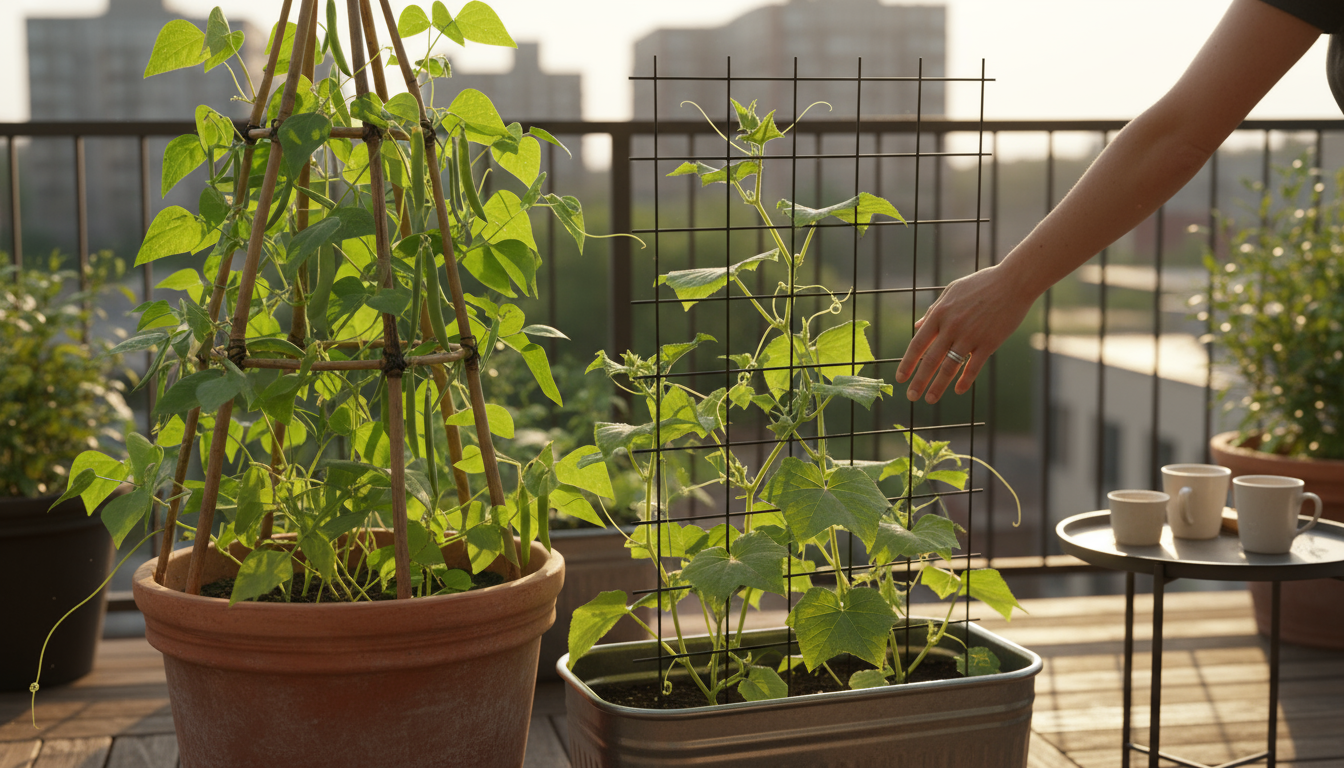
Pests and Diseases
Regular inspection is the best defense. Common container pests include aphids, spider mites, and whiteflies. Diseases can include powdery mildew or various blights.
- Aphids / Spider Mites / Whiteflies:
- Symptom: Small insects on leaves and stems, sticky residue (honeydew), stunted growth, mottled or yellow leaves.
- Solution: Blast with a strong stream of water. Apply insecticidal soap or neem oil, ensuring coverage on the undersides of leaves. Introduce beneficial insects like ladybugs if the problem persists.
- Powdery Mildew:
- Symptom: White, powdery patches on leaves, often on squash, cucumbers, or peas.
- Solution: Improve air circulation by spacing plants appropriately and pruning dense foliage. Apply a fungicide specifically for powdery mildew, or a homemade solution of baking soda and water (1 teaspoon baking soda per quart of water with a few drops of dish soap).
Proactive care and quick action are your greatest allies in maintaining a healthy, high-yielding container garden. Your vigilant attention will ensure your `best crops small garden` can produce reach their full potential.
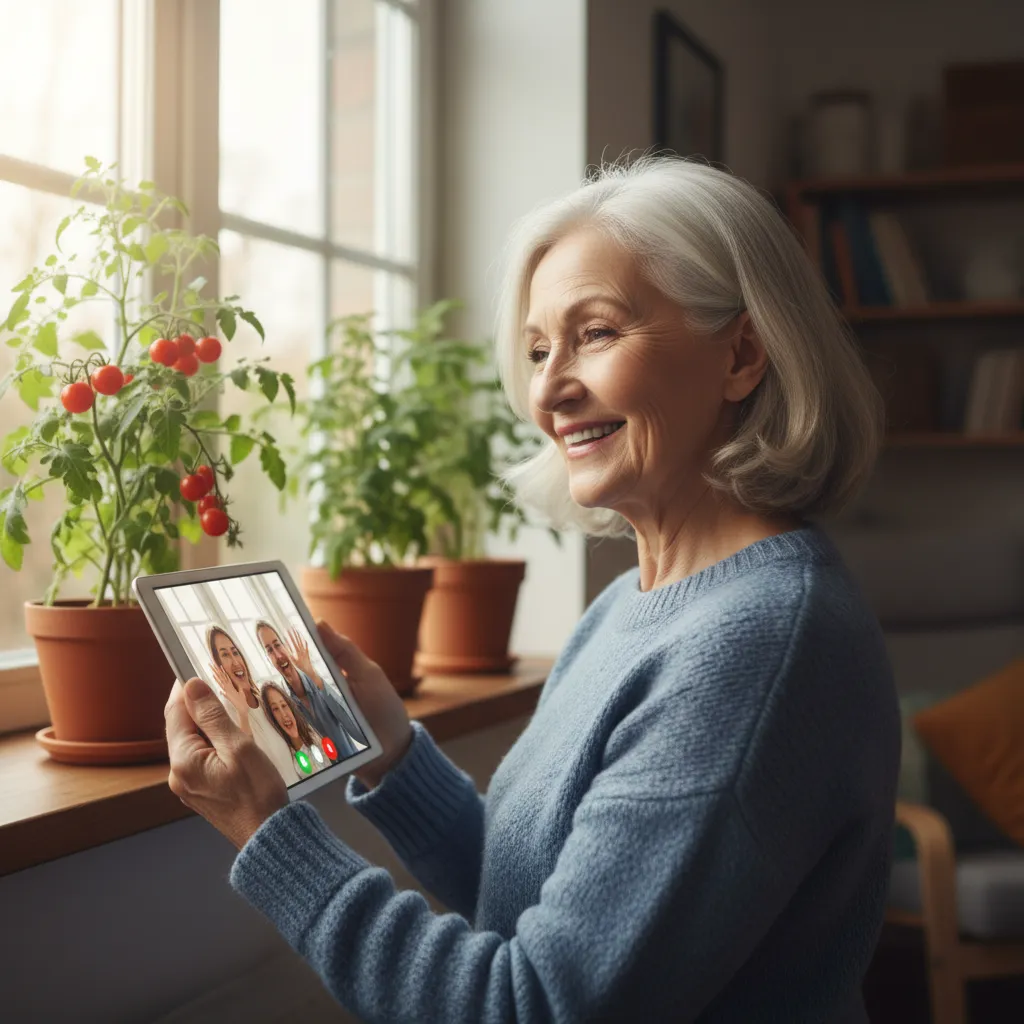
Frequently Asked Questions
What is the minimum pot size for a single tomato plant?
For a single determinate (bush) tomato plant, a minimum 5-gallon container is recommended, which typically measures about 12-14 inches in diameter and depth. Larger pots, up to 10-15 gallons, are even better for indeterminate varieties or for maximizing yield, providing more soil volume for root growth and moisture retention. Smaller pots severely limit fruit production and require constant watering and fertilizing.
Can I reuse potting mix for the next growing season?
While you can partially reuse potting mix, it is not ideal for high-yielding `vegetables in pots`. The structure of potting mix degrades over a season, becoming compacted and less effective at drainage and aeration. It also becomes depleted of nutrients and may harbor dormant pest eggs or disease pathogens. For best results, replenish at least 50% of the old mix with fresh, sterile potting mix, and always incorporate a generous amount of fresh compost to restore fertility and beneficial microbes. For annuals, it is often best to start with all new potting mix to prevent issues.
How often should I fertilize my container vegetables?
The frequency of fertilization depends on the plant, the potting mix you use, and the type of fertilizer. Most `container gardening veggies` are heavy feeders and will deplete nutrients faster than in-ground plants. As a general guideline, begin with a potting mix that has a slow-release fertilizer or amend it with compost. For liquid fertilizers, plan to feed every 2-4 weeks during the active growing and fruiting phases. Always follow the specific instructions on your chosen fertilizer product, and observe your plants for signs of nutrient deficiency or over-fertilization (burnt leaf tips, stunted growth). Leafy greens often need more nitrogen, while fruiting vegetables need more phosphorus and potassium during bloom and fruit set.
What does “drainage” mean for container plants?
Drainage refers to how effectively excess water moves out of your pot and away from the plant’s roots. Good drainage is crucial because plant roots need oxygen to survive. If water sits in the bottom of a pot, it displaces oxygen, suffocating the roots and leading to root rot. This is why drainage holes are absolutely essential in every container. A well-draining potting mix also contributes to good drainage, allowing water to pass through readily while still retaining enough moisture for the plant.
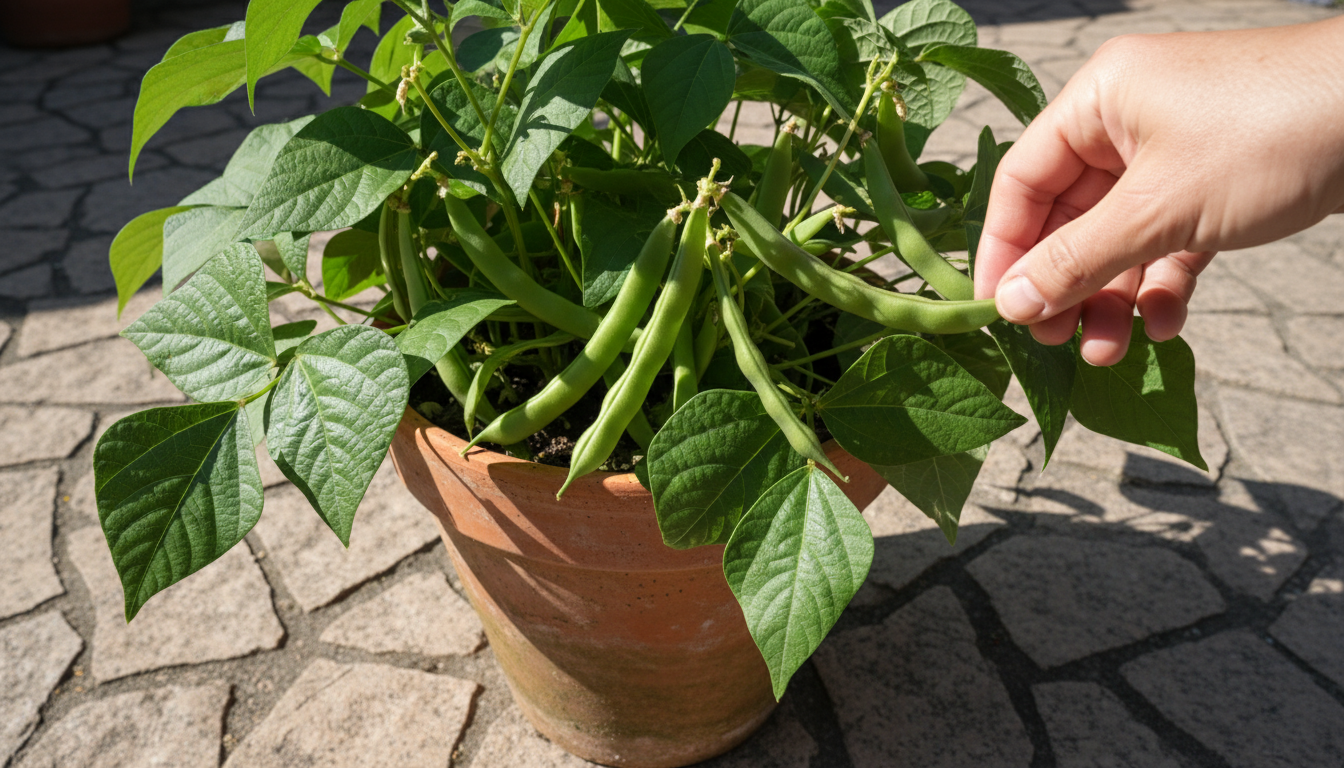
Can I grow root vegetables like carrots or potatoes in pots?
Yes, you absolutely can grow root `vegetables in pots`, but specific varieties and container sizes are key for the `best crops small garden` will yield. For carrots, choose “stump-rooted” or “round” varieties like ‘Paris Market’ or ‘Danvers Half Long’ and plant them in pots at least 10-12 inches deep and wide. Ensure the potting mix is loose and free of obstructions. For potatoes, use grow bags or large, deep containers (15-gallon or larger) and choose early-maturing varieties. You will “hill” the potatoes by adding more soil as the plant grows, covering the stems to encourage more tuber development.
For trustworthy gardening information, visit: Texas A&M AgriLife Extension — Horticulture, University of California ANR — Home Gardening, Michigan State University Extension — Gardening and Ohio State University Extension — Gardening. These organizations provide expert, research-based advice for gardeners at all levels.
Disclaimer: This article is for informational purposes only and is not a substitute for professional gardening advice. Always consult local extension services or horticulture experts for region-specific guidance.
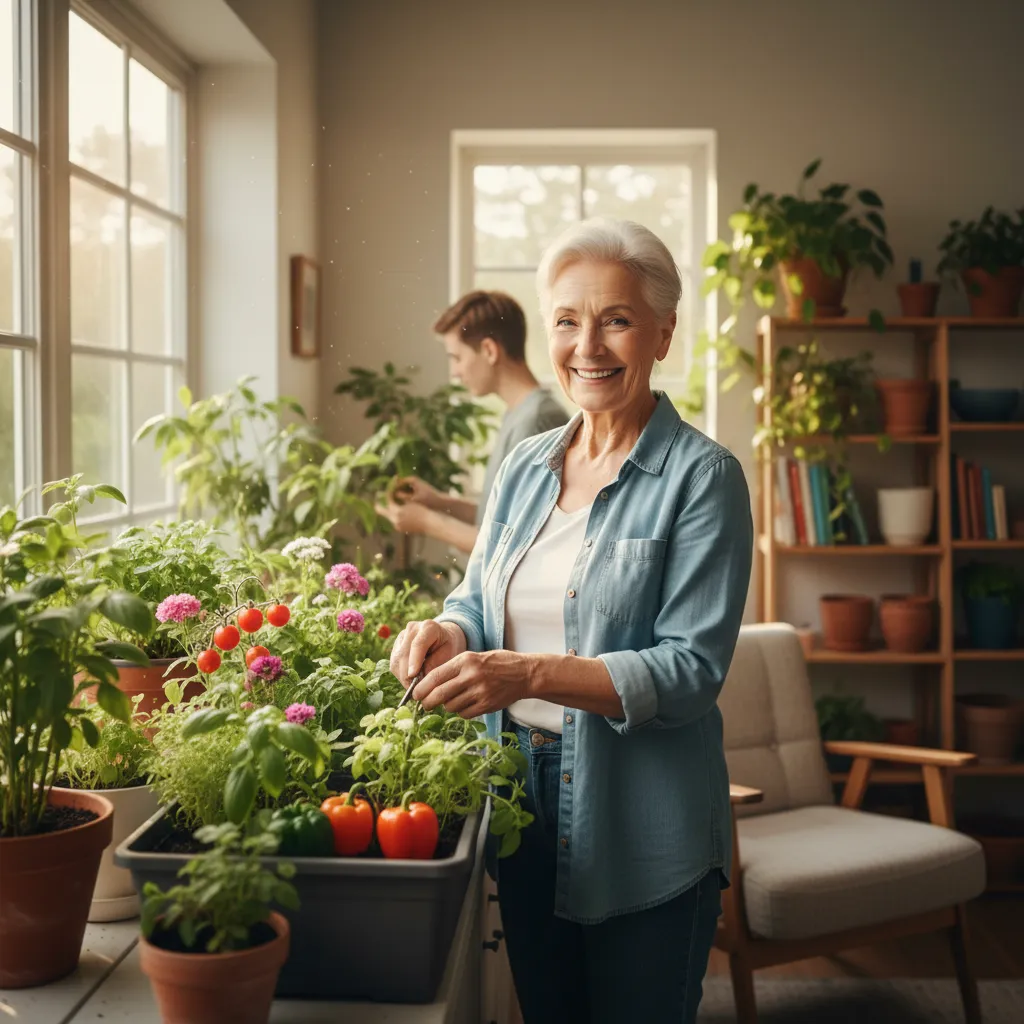
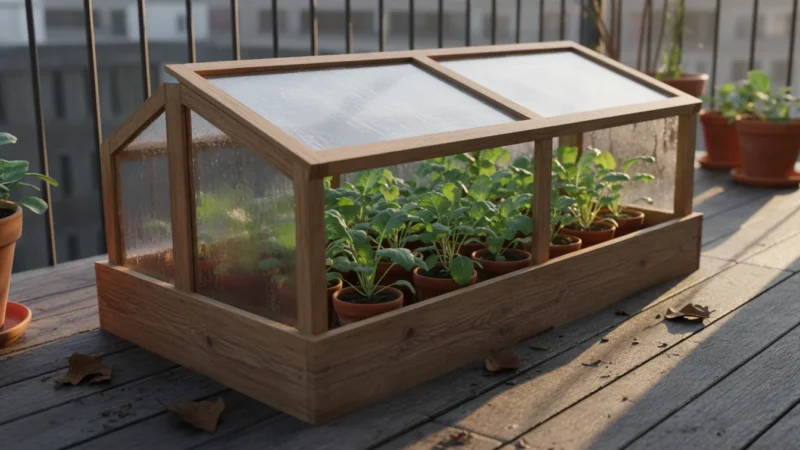
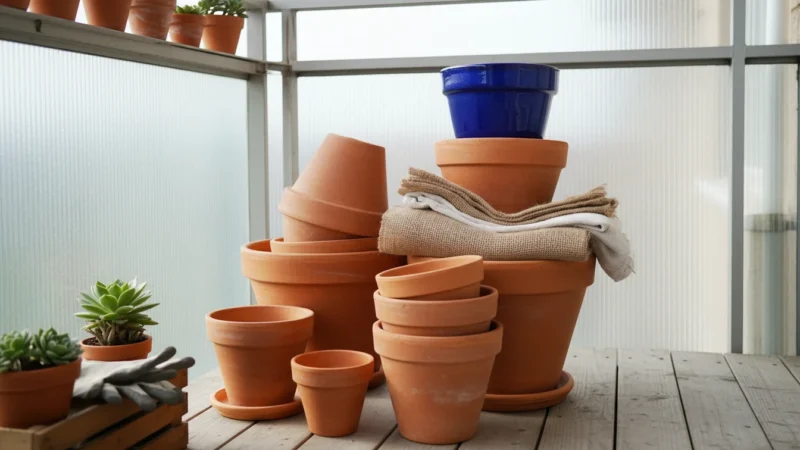
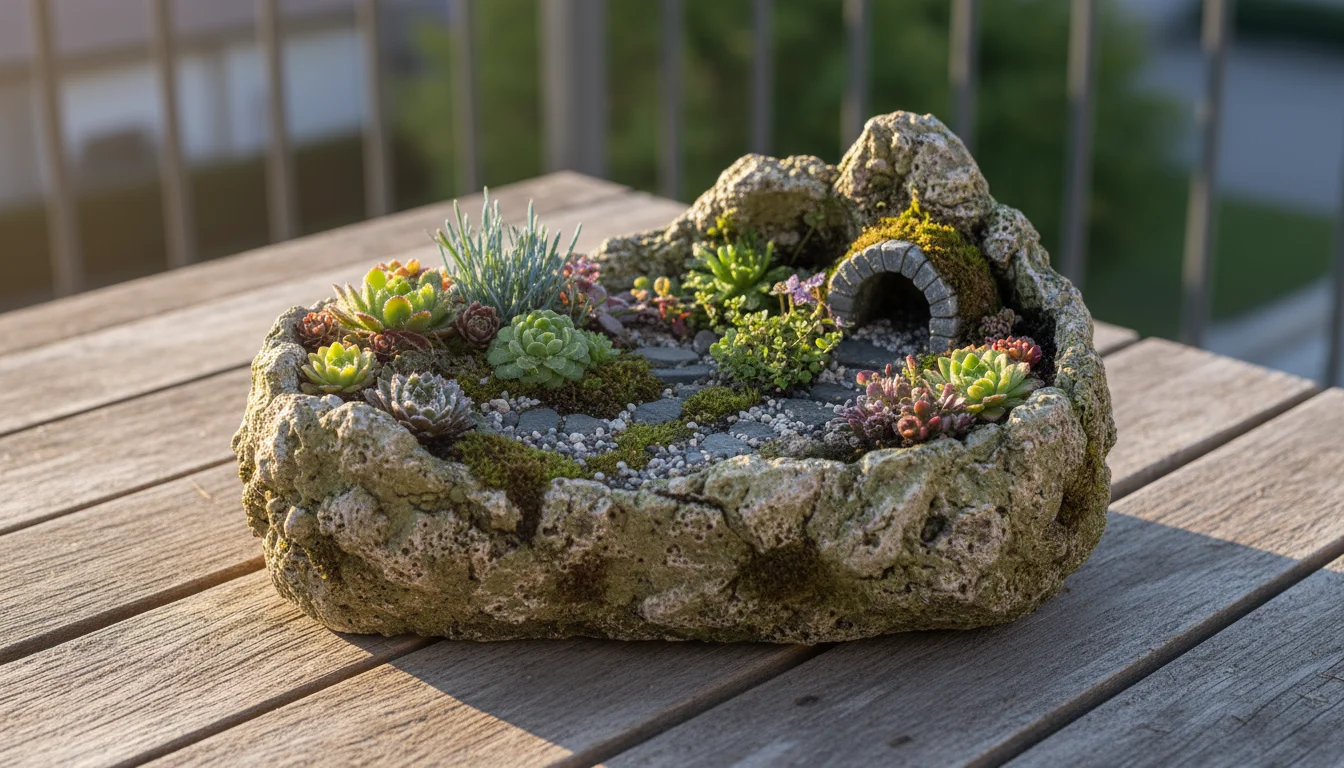
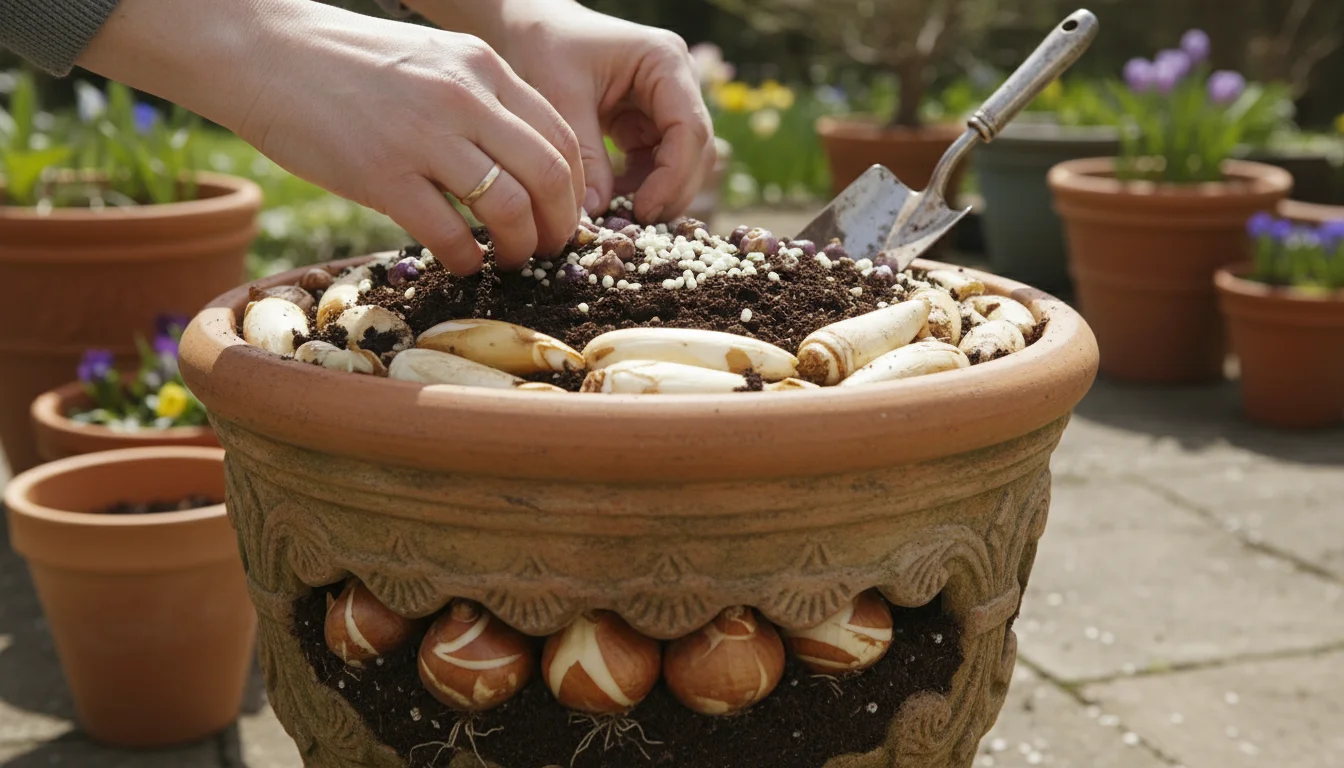
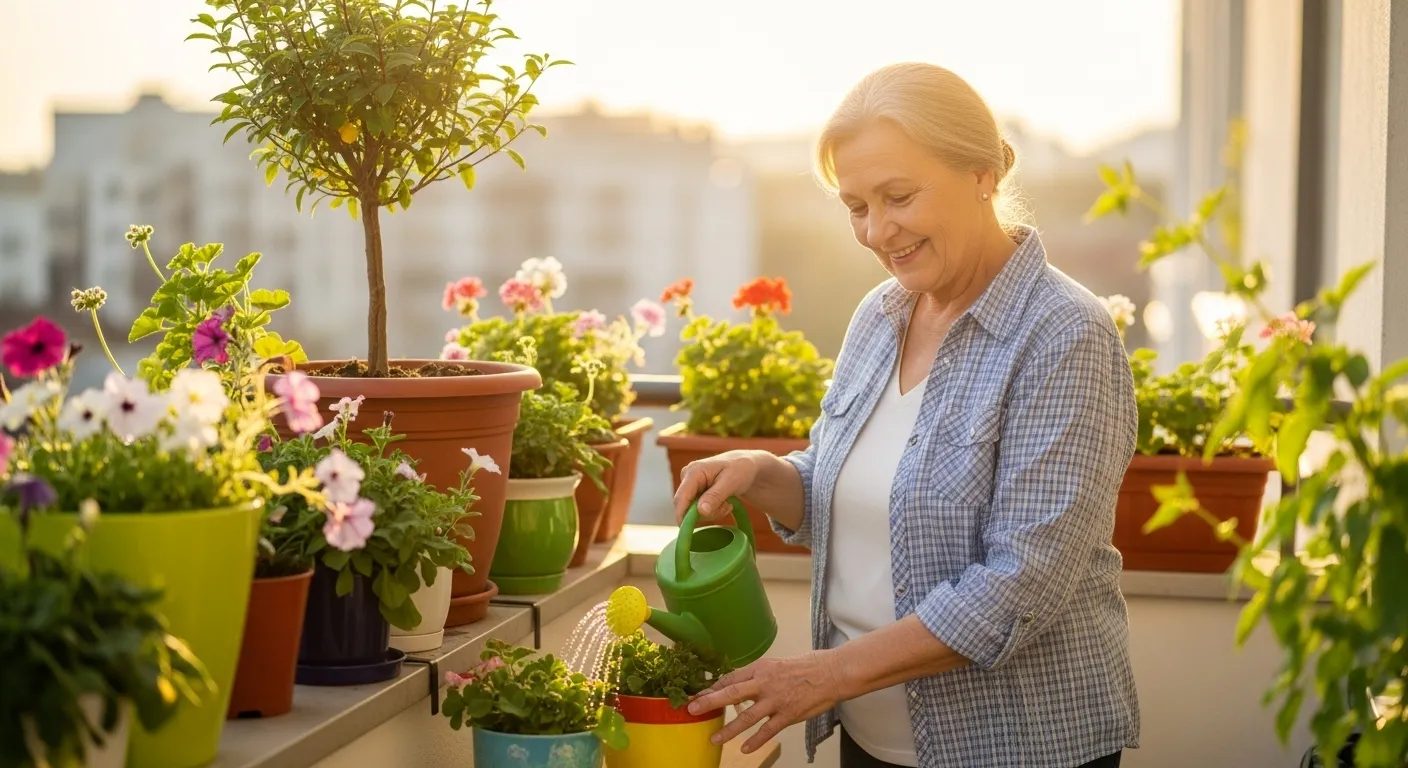
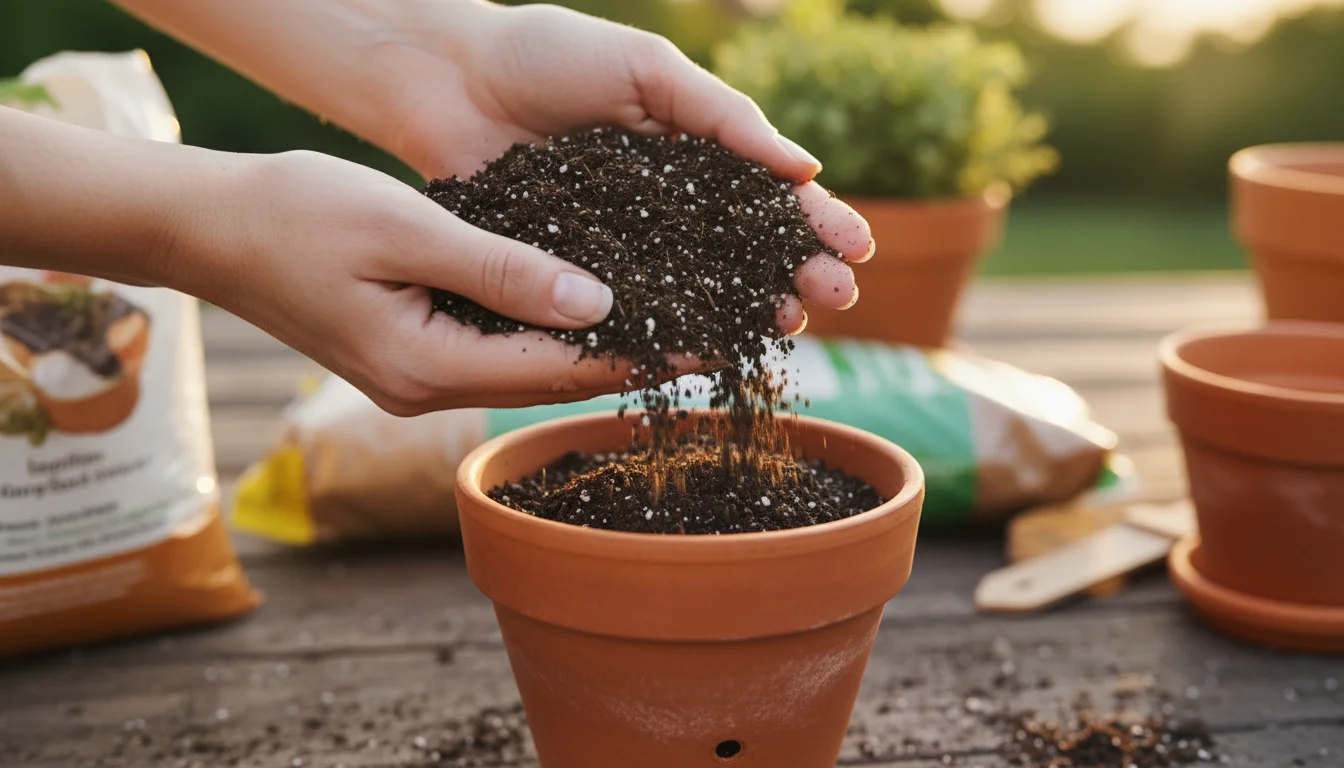
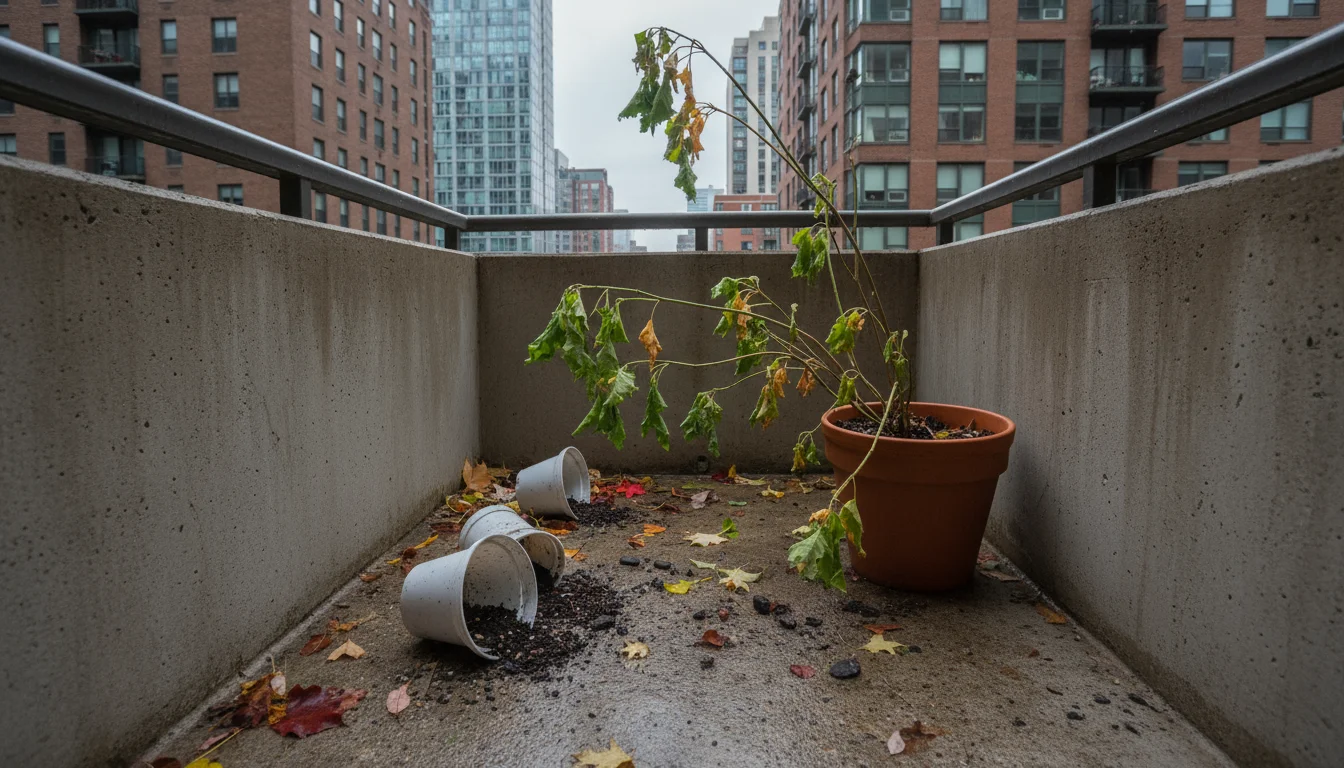
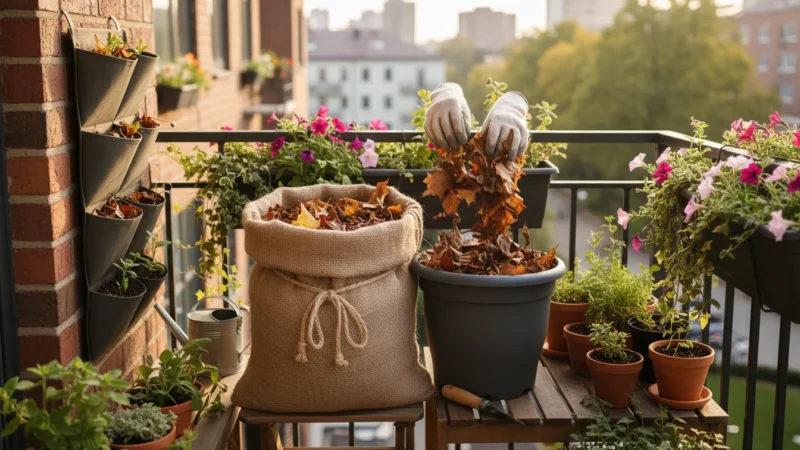
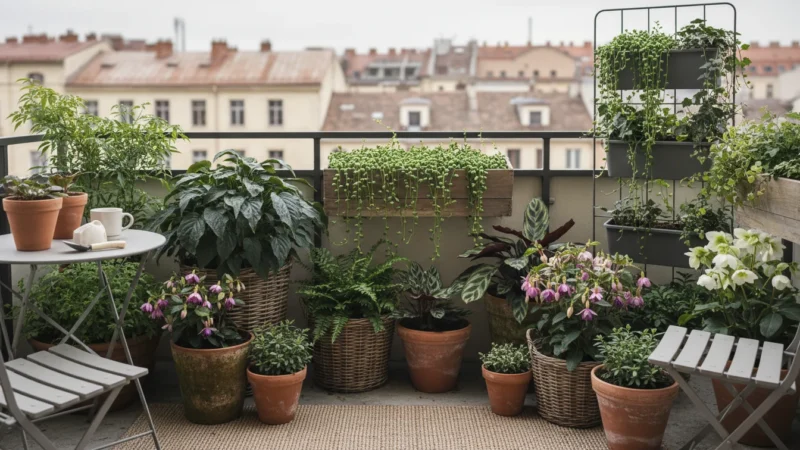
Leave a Reply